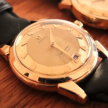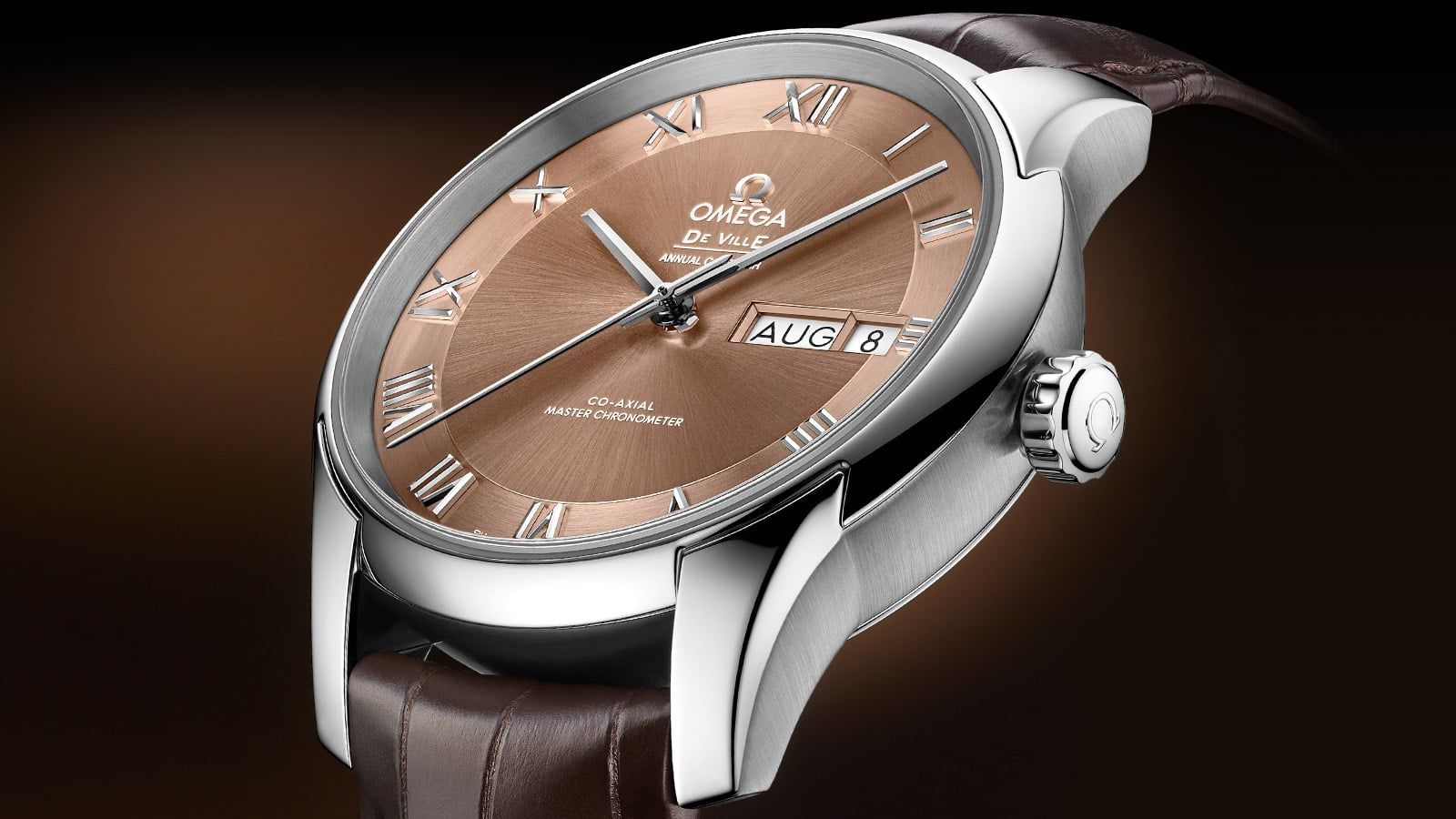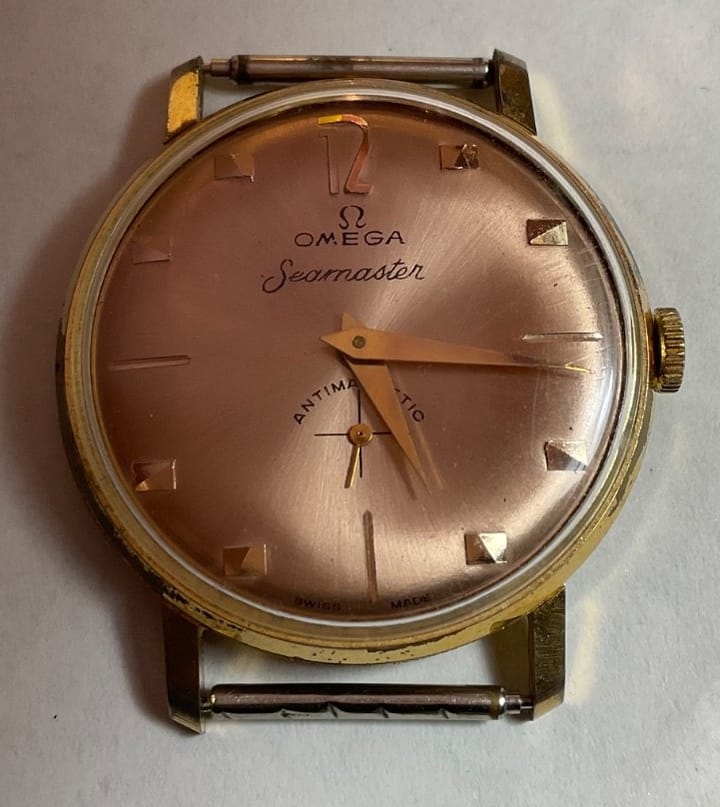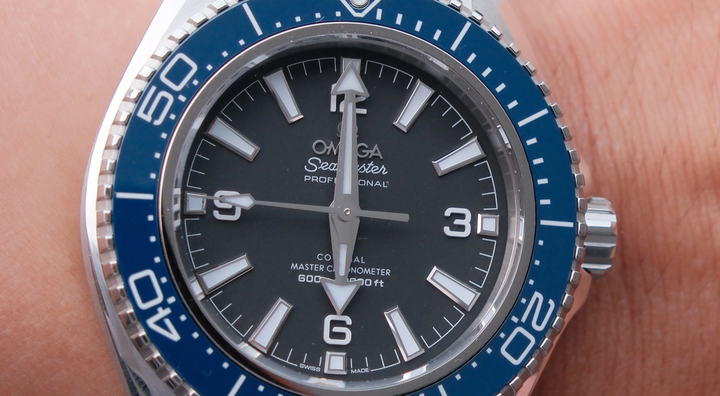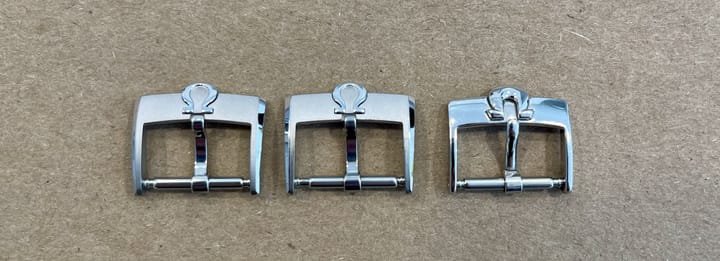Every new Omega tends to be an upgrade over its predecessor. It can be a little surprising then when a watch doesn’t quite live up to that expectation. In the case of the Hour Vision, Omega’s flagship for the Calibre 8500, those shoes may have been too big to fill.
Three Watches Spanning Two Generations (And A Bit)
The original Hour Vision was a halo product and statement of intent from Omega. Combining some of the latest technologies available within the broader Swatch Group with Omega's first true in-house movement since the golden era. It was an extremely important watch that set the tone for the next decade.
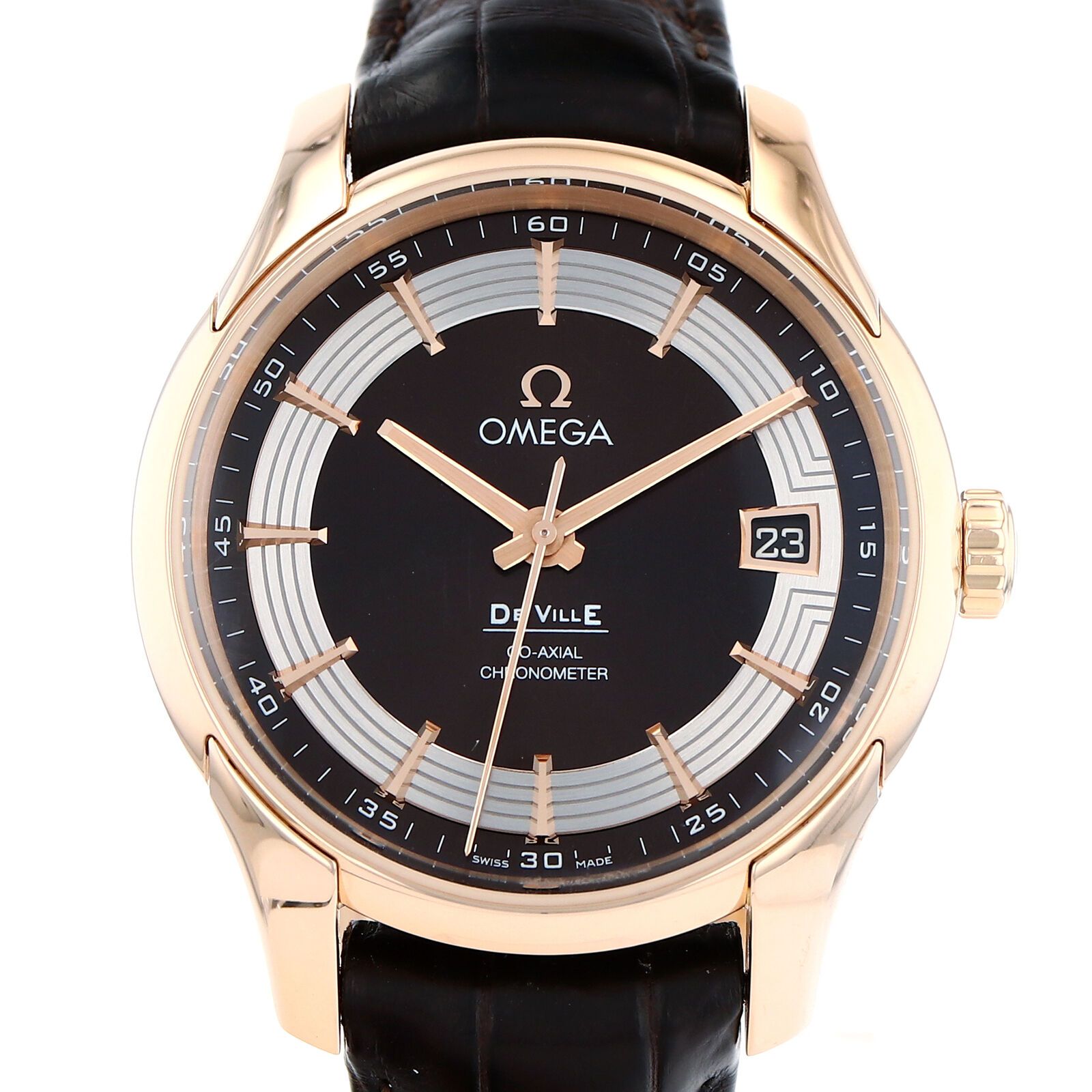
By the end of that decade in 2016, the Hour Vision was still a very special watch with a degree of finishing and case design that truly set it apart, yet the watch was well overdue for an update.
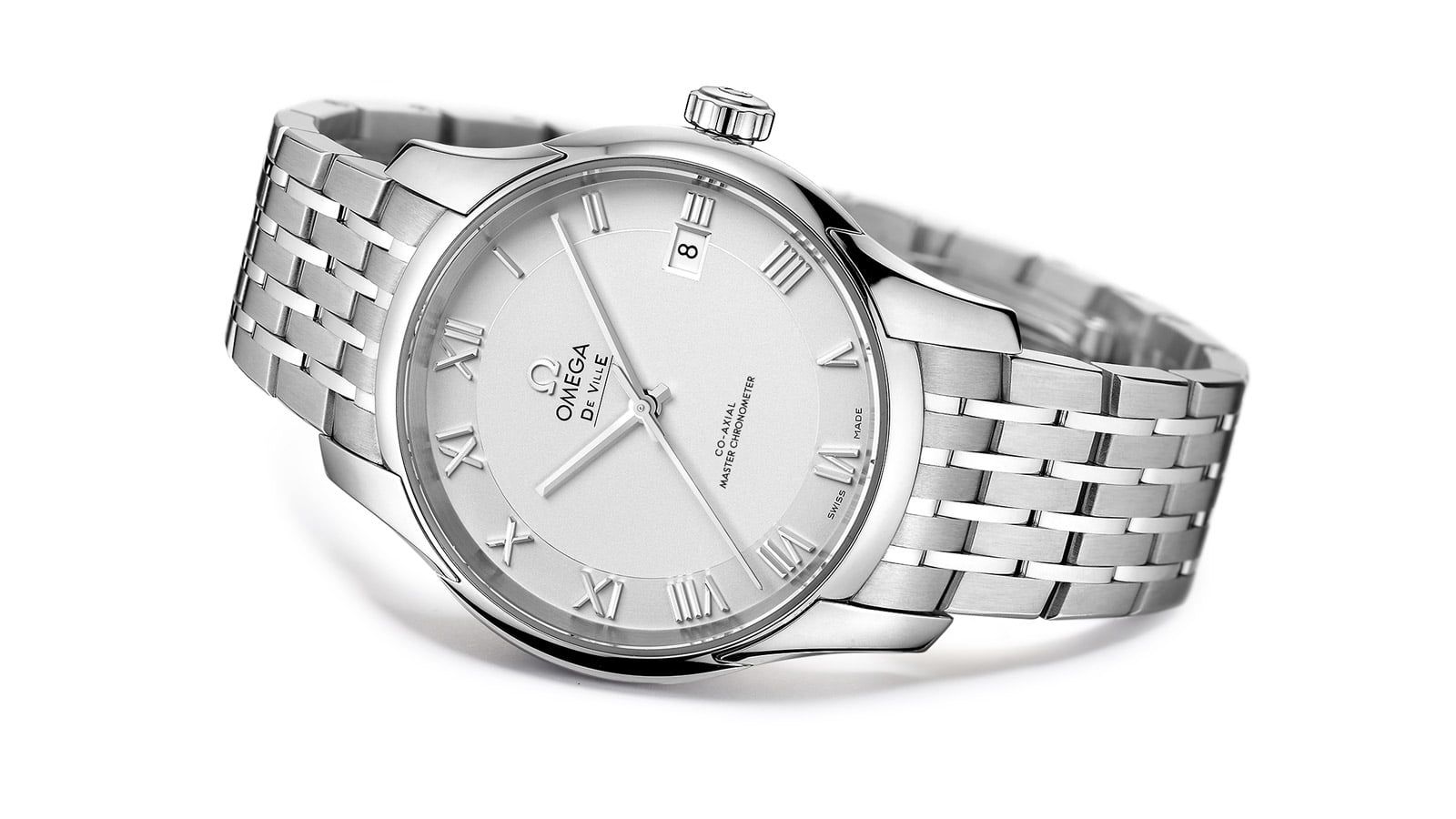
This is where the 2nd generation of Hour Vision models, powered by the anti-magnetic and METAS certified Calibre 8900 come into the picture.
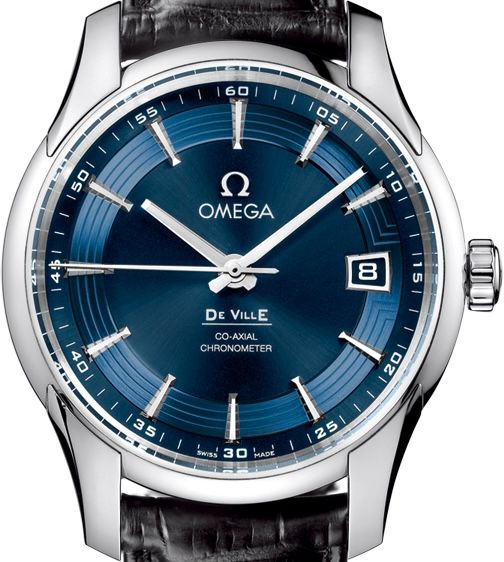
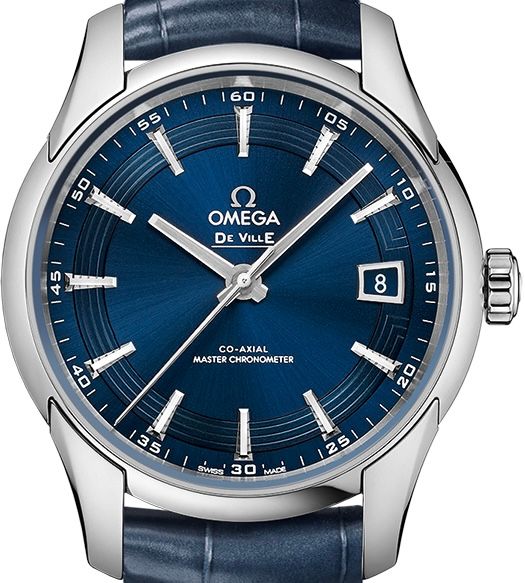
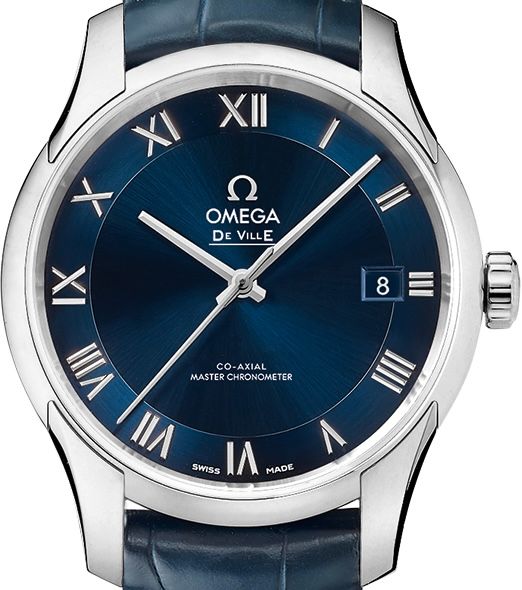
The three blue dial watches above give an insight into the changes the model line would undergo. On the left is the Orbis limited edition blue dial version of the original Hour Vision, powered by Calibre 8500, a very handsome and attractive watch with a rather detailed and complex dial.
On the right is the updated second-generation Hour Vision, with applied white gold hour markers, a non-applied date window and a simplified dial. It remains a beautiful watch, that can't be disputed but compared to the original, it feels a bit restrained, austere, and even a bit of a step backwards.
That's an odd thing to say about a modern Omega, given that the brand has gone from strength to strength in the last two decades with each new release being a significant iterative improvement. The Hour Vision may be a watch that simply burned too brightly back in 2007 and had to come back to earth.
The center watch in the trio above might look like the original, but it's an unusual transitional variant featuring a dial very similar to the much loved original, and is the most special Hour Vision of all. This model combined the original full sapphire case design, and the Orbis blue style dial with the latest Calibre 8900 movement for the best of both worlds. Arguably this is THE Hour Vision to have of them all.
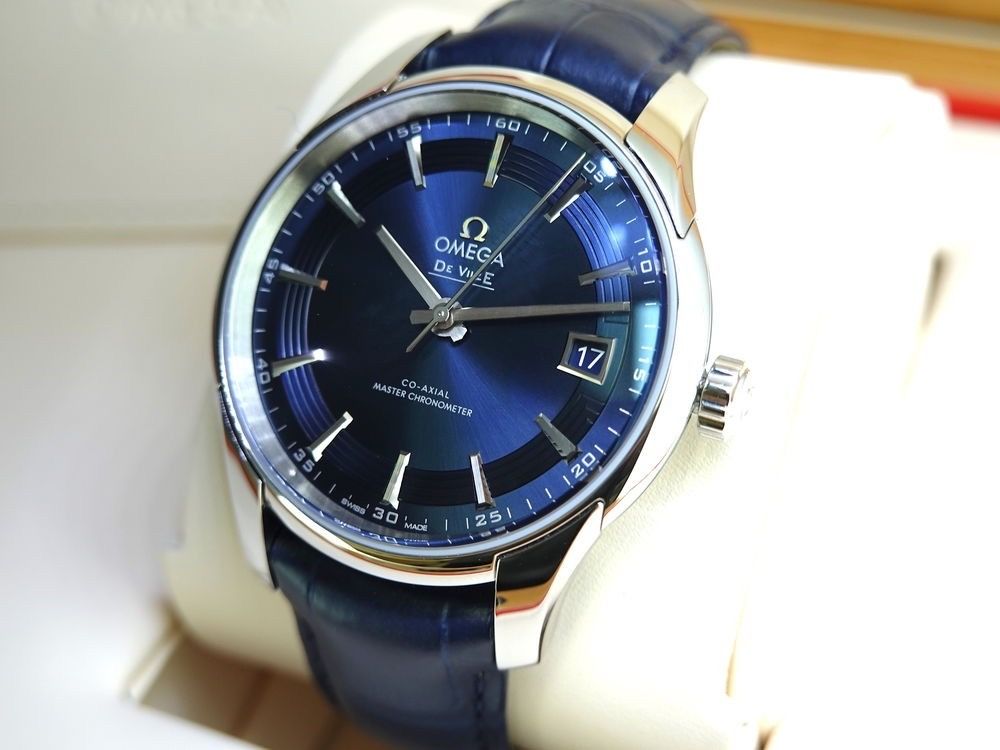
Case & Bracelet
In essence the second-generation Hour Vision case is identical to the original, but slightly less special. Gone is sapphire glass-house allowing a view into the movement from the sides and gone is the case-back secured by four screws from behind.
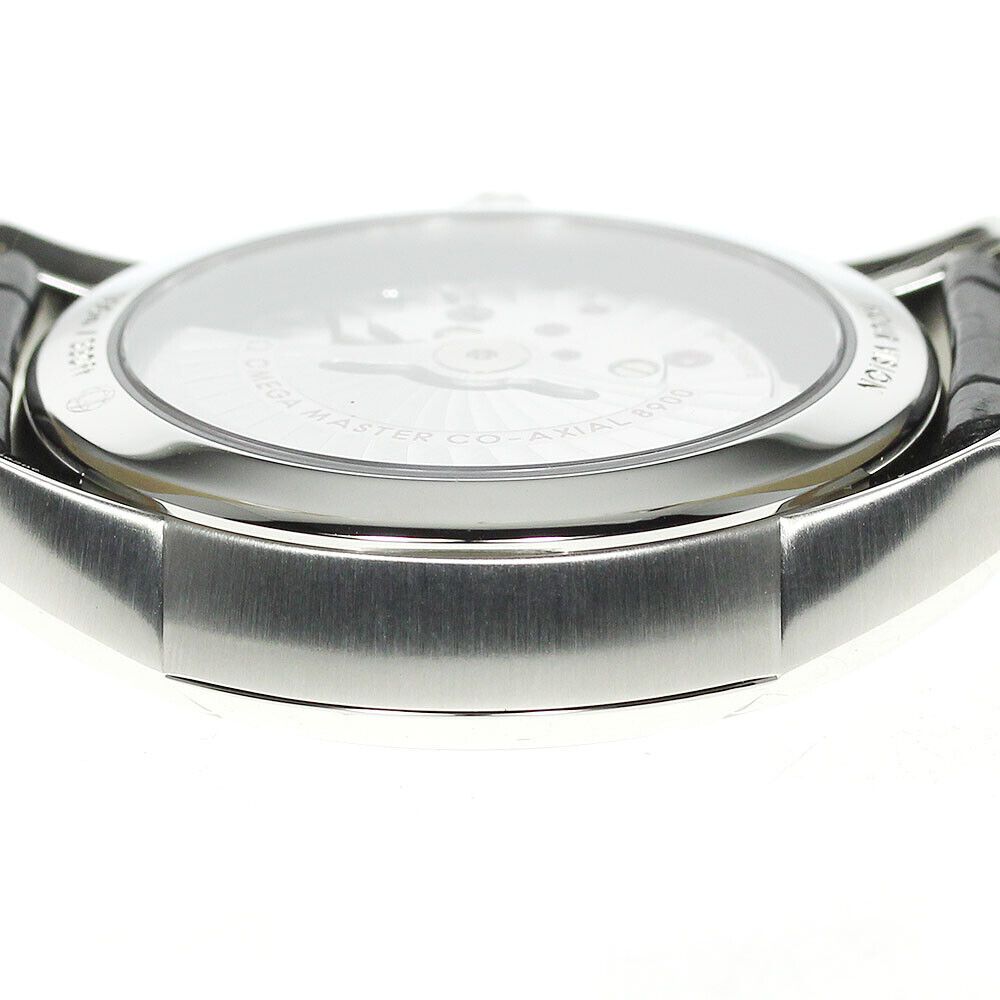
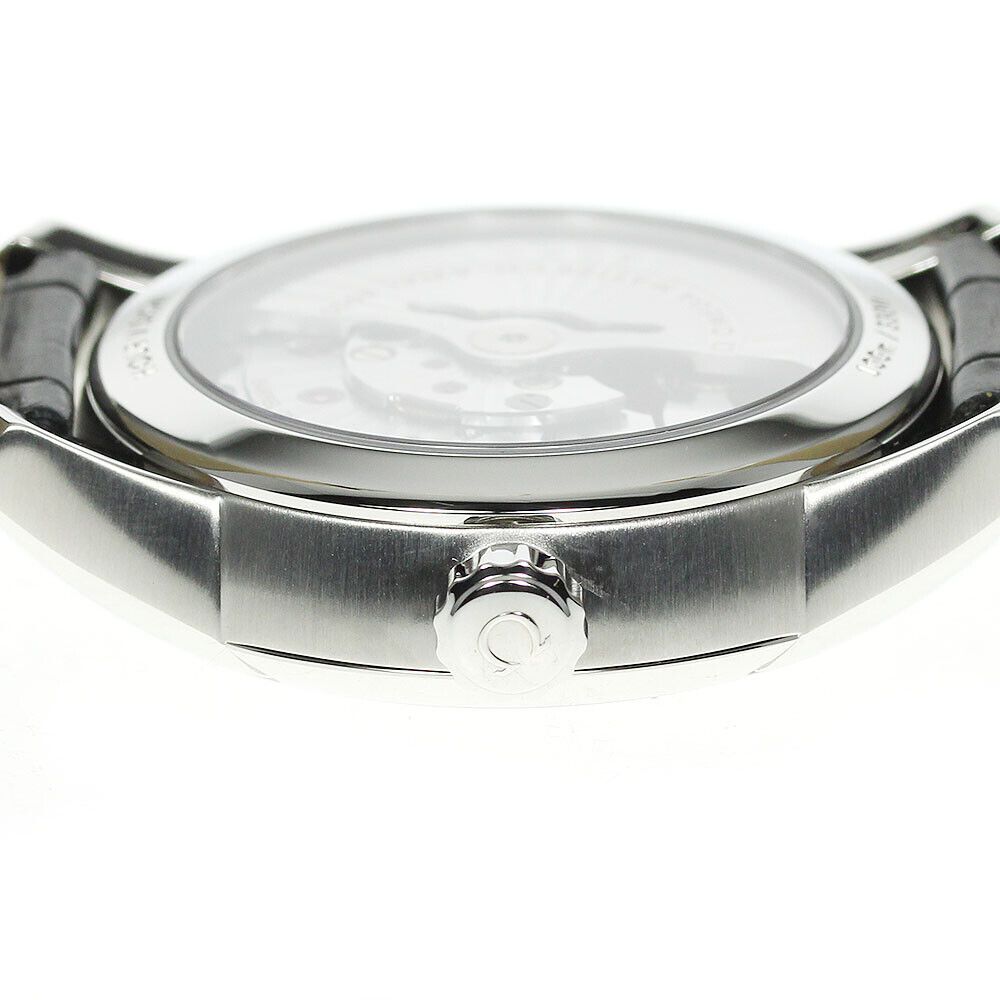
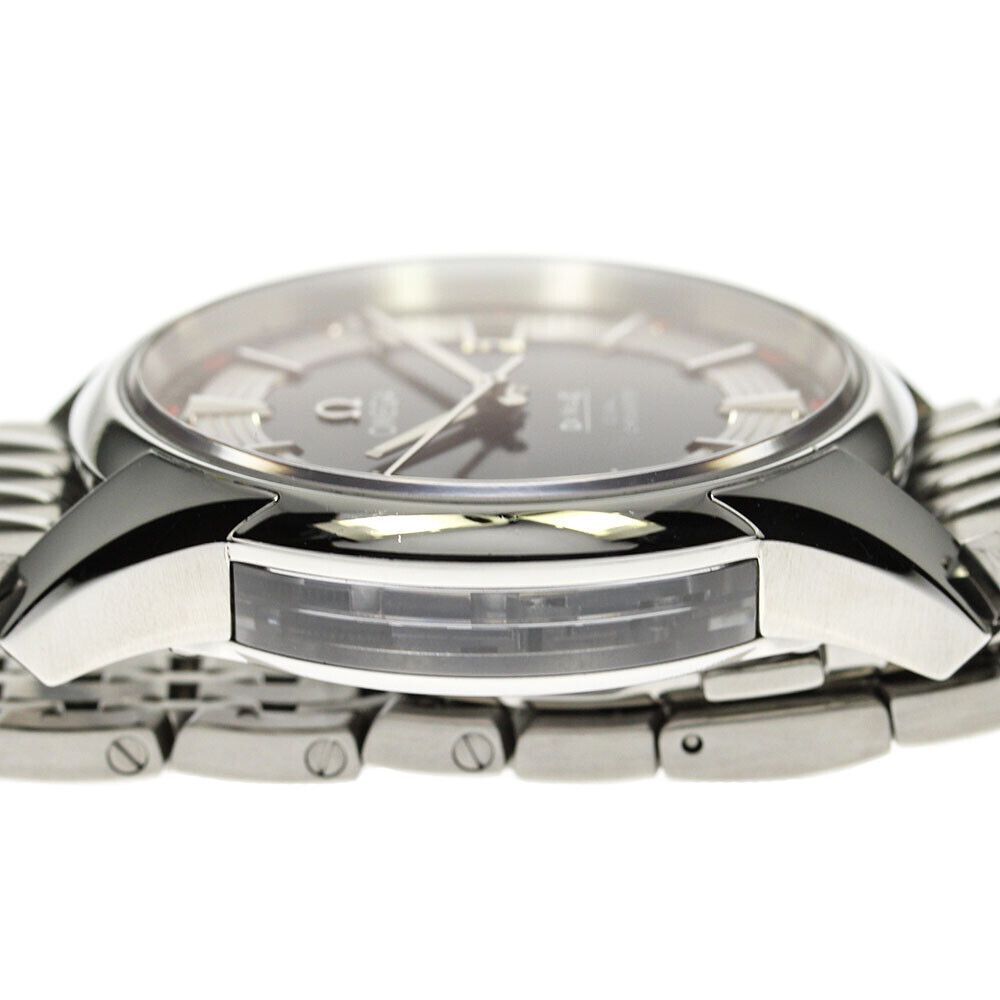
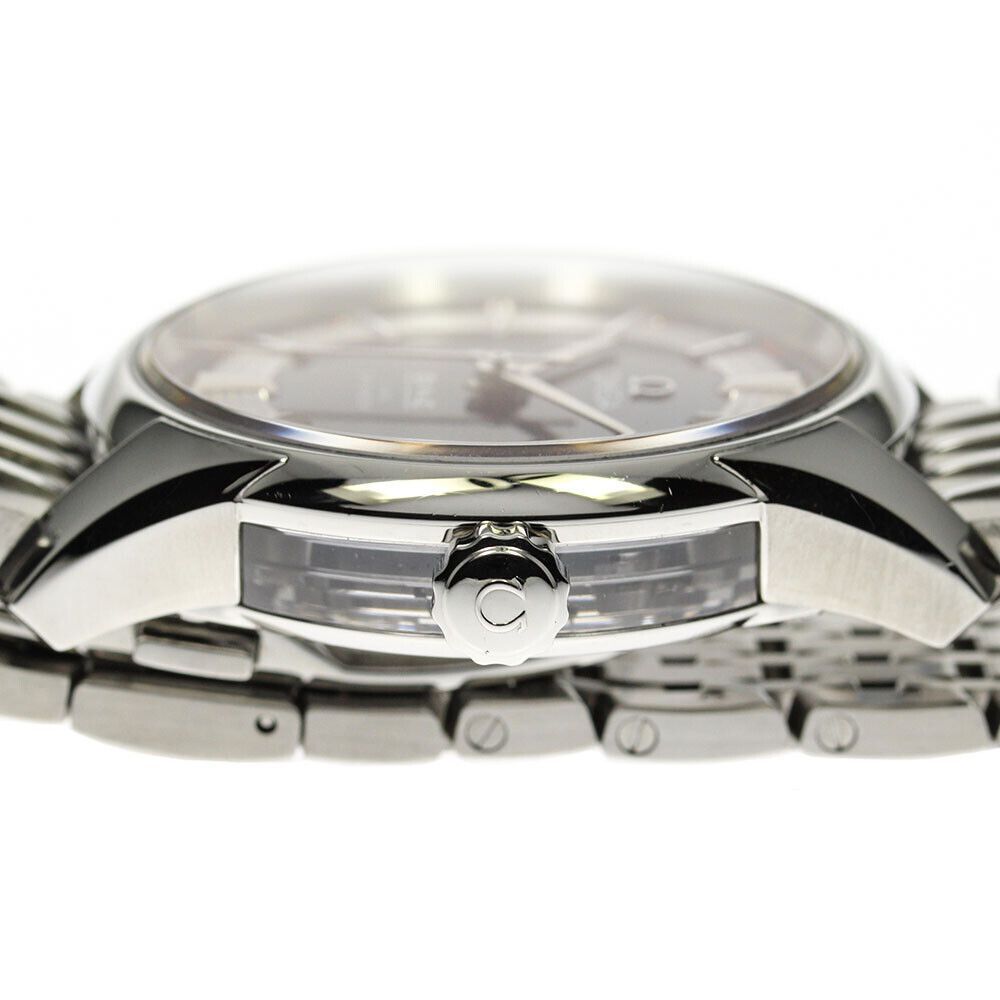
Thickness has actually increased as well, from 12.2 mm up to 12.5 mm, and while that is not too thick by any means, it is a step in the wrong direction. The transitional blue dial with Calibre 8900 still uses the old case at 12.2 mm, so the increase isn't related to the movement either.
On the annual calendar thickness has also increased from 14 mm to 14.2 mm which is barely noticeable but still not the direction we would like to be seeing.
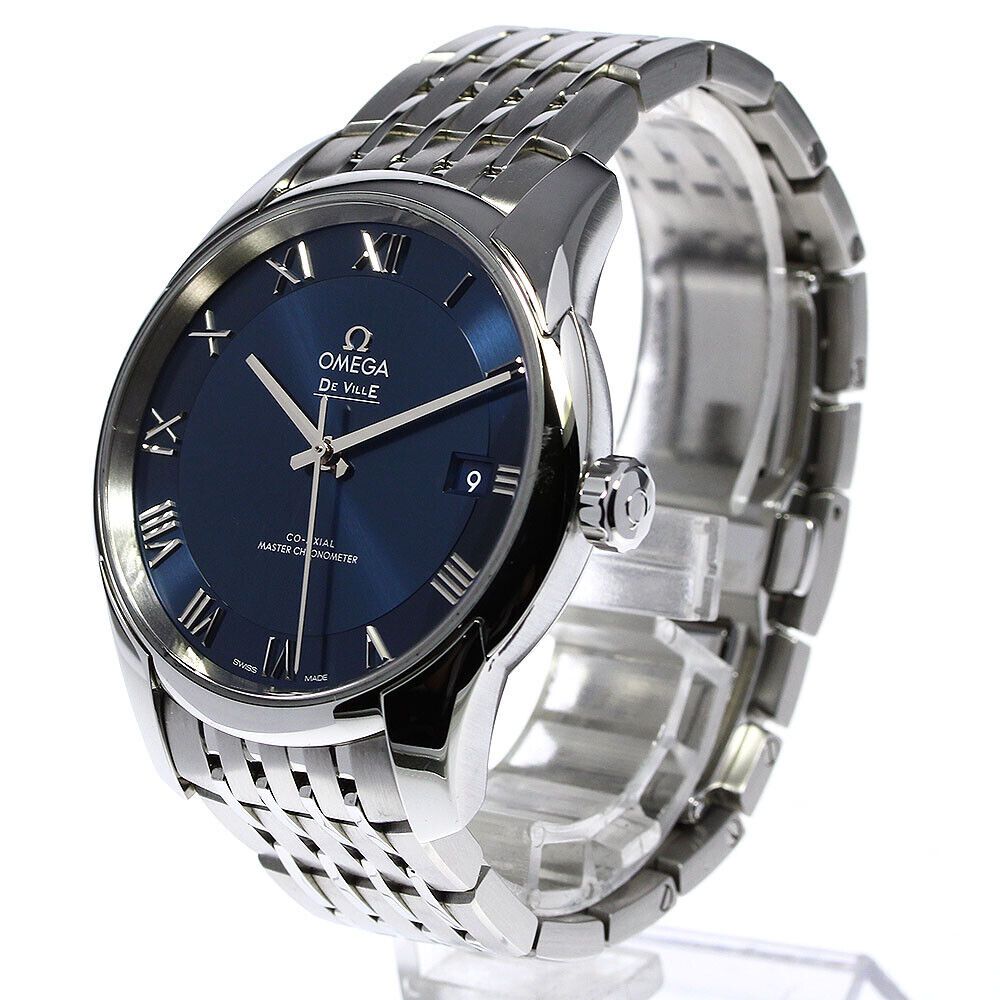
It is a bit sad that the key feature that earned the Hour Vision its name is now gone. I have long suspected that this feature was very costly on the original version and that Omega discontinued it as a result of this. While it's sad to see it go, it reinforces just what a great value and special watch the original Hour Vision still is.
The remainder of the case keeps the same look, with the lugs appearing to be separated from the case by a crease in the metal on the front face of the watch. The same knurled crown is used with no crown-guards, and the newly simplified press-fit case-back design carries the same 100 meters water resistance as the original.
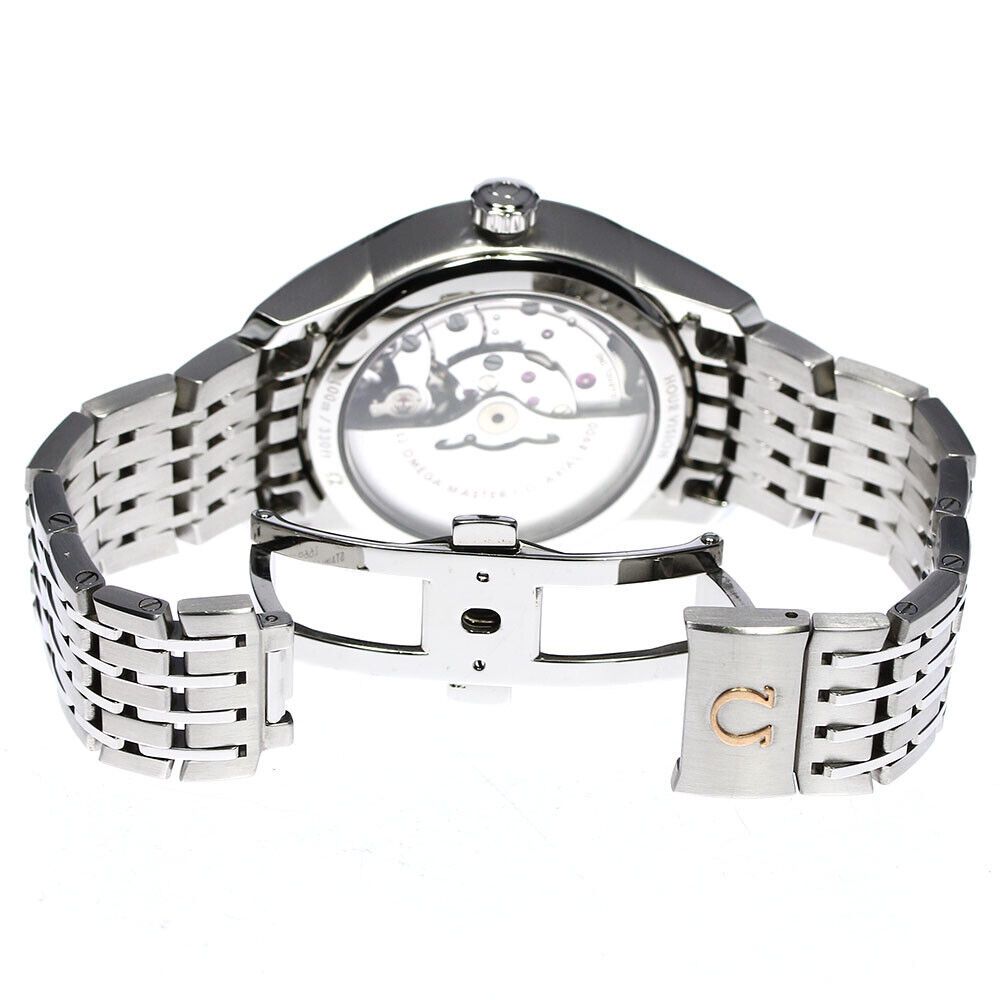
In place of the sapphire sides is satin finished stainless steel which tapers and curves towards the case-back at the rear. It's not an unattractive case by any means, in fact it remains one of the most striking in the De Ville collection and arguably is still even better than the Aqua Terra. It just feels like a loss knowing how great the original was.
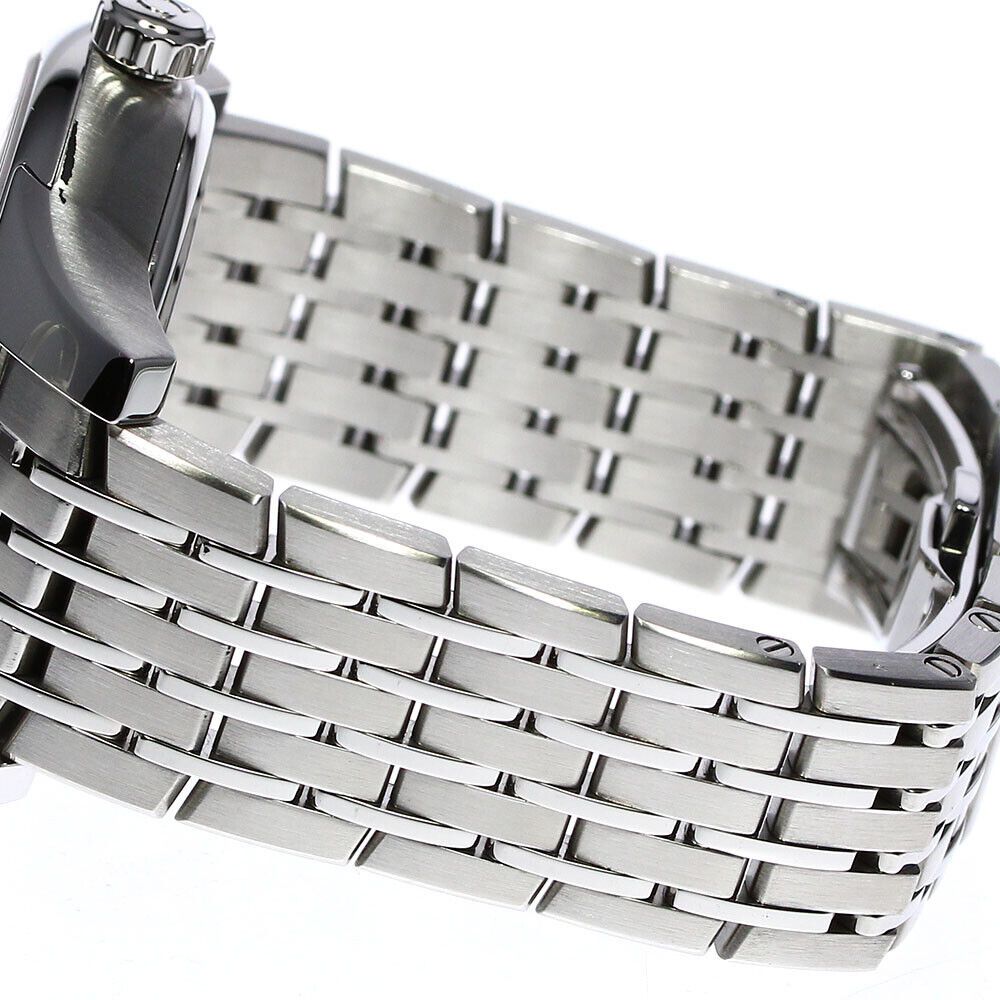
The Hour Vision bracelet returns with its modern stylised beads of rice look, bi-fold butterfly clasp and terrific comfort. An updated version of the Omega single-fold deployant clasp is used on the strap versions.
Movement
The movement powering all second-generation time-only Hour Vision models including the transitional generation 1.5 blue dial is the Calibre 8900 METAS Certified Master Chronometer movement.
To give a brief history of how this movement came to be, the original Hour Vision used the launch version of the Calibre 8500 and later on the updated B variant. In later years, Omega updated to the Calibre 8500 to be resistant to magnetic fields of up to 15,000 gauss, this version was known as the Calibre 8500 G variant. The Calibre 8900 is an updated version of this, with METAS Master Chronometer certification rather than COSC certification, and tighter specifications. While there are some differences in parts in the Calibre 8900, these are mostly minor or cosmetic in nature.
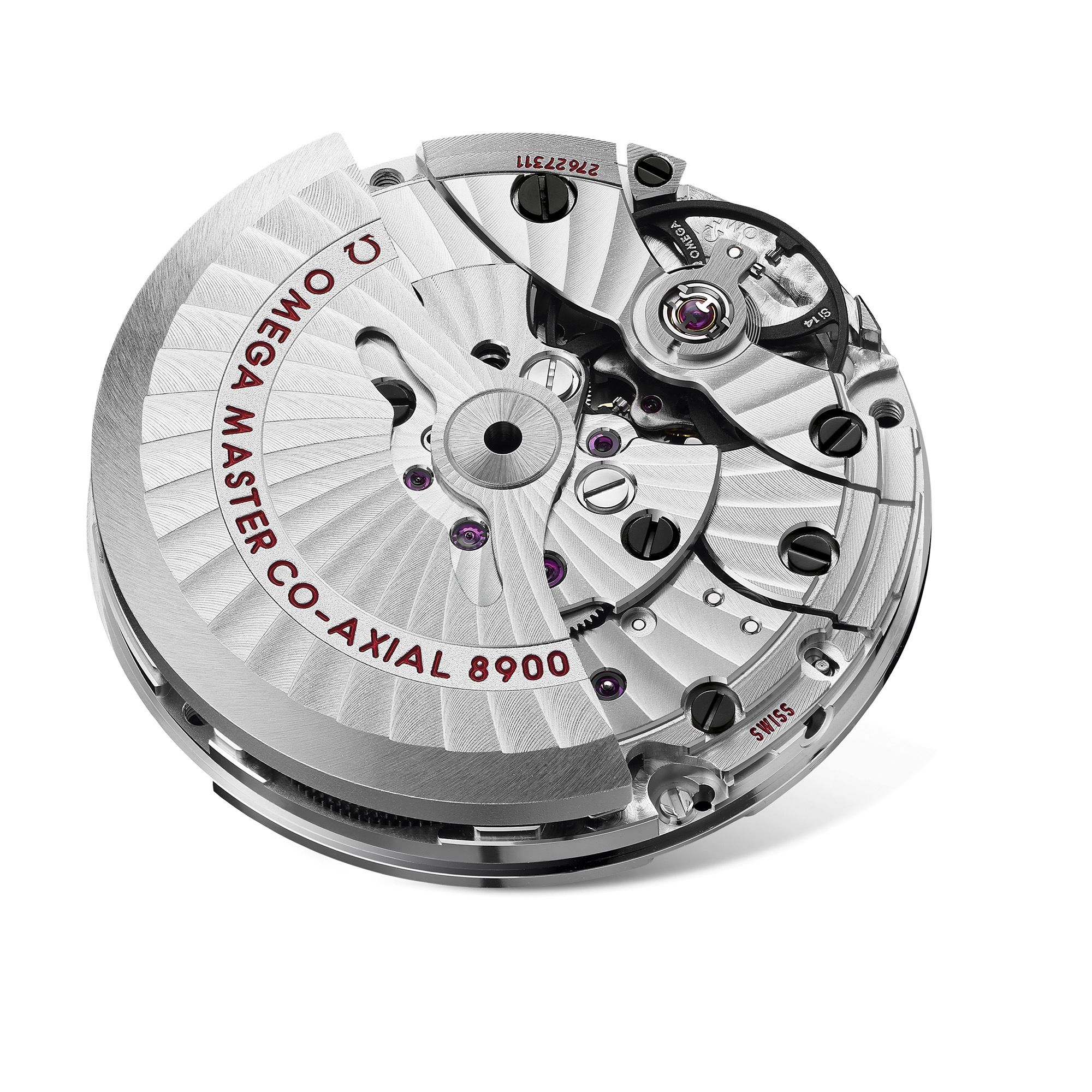
The Calibre 8900 shares the specifications of the Calibre 8500 before it, oscillating at 25,200 vph, featuring hacking, date, a jumping-hour quick-set mechanism, 15,000 gauss magnetic resistance, METAS certification, and a 60-hour power reserve from its bi-directional winding system.
The annual-calendar versions of the second-generation Hour Vision are powered by the Calibre 8902 movement. The annual calendar complication is quite a complex one, adding a significant amount of thickness and reduces the power reserve from the Calibre 8900's 60 down to 55 hours.
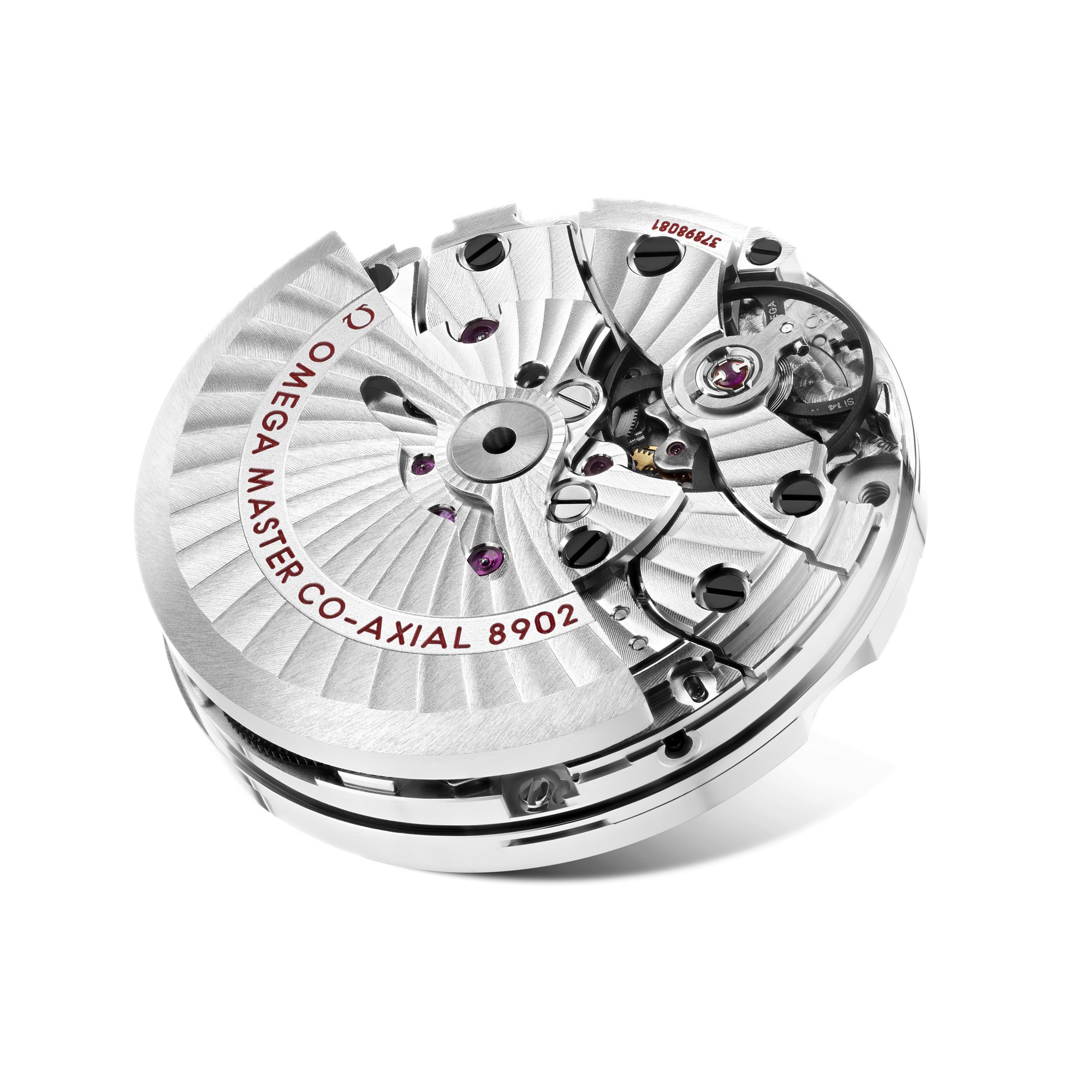
These watches can be serviced by any Omega certified independent watchmaker with access to an Omega parts account. As this is an evolved and improved version of Omega's flagship movement in use since 2007, it is considered to be very reliable, accurate and dependable.
Variants
All variants are powered by the Co-Axial Calibre 8900 Master Chronometer movement. The transitional version is the odd man out with its unique dial and first generation Hour Vision case, but beyond that the design is very consistent between models and metals.
All of the new dials feature the De Ville Logo above just under the Omega logo with Co-Axial Master Chronometer being the only text at the bottom. That minimalist choice was an excellent one and allows the beauty of these metallic starburst dials to really show.



Blue Transitional
The blue transitional is my personal pick of the second-generation Hour Vision models as it is the only one to preserve the original sapphire case. This model is essentially a near identical but updated successor to the Orbis limited edition Calibre 8500 version, powered by Calibre 8900 and featuring a slightly updated dial.
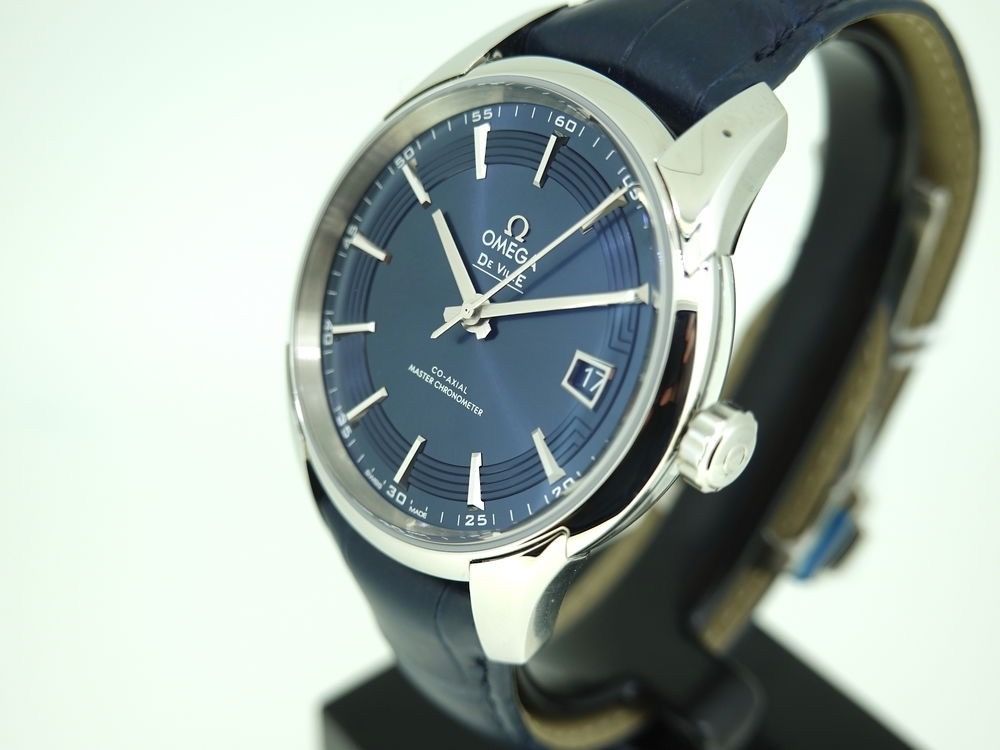
The new dial retains the outer minutes track around the edge with the same font as the original and re-uses the same applied hour markers and applied date window surround. Where it does differ slightly is in the color which is slightly more vivid than the old model and the shape of the stylised rings running under the hour markers. Additionally, the dial text layout has changed with a slightly less conspicuous set of logos. The date wheel has also changed, which is a slightly odd choice as it now uses a much softer and more rounded font than the original.
The reference for this model is 433.33.41.21.03.001 and like the Orbis limited edition before it, it only comes on leather strap, although a bracelet can be separately obtained and fitted.
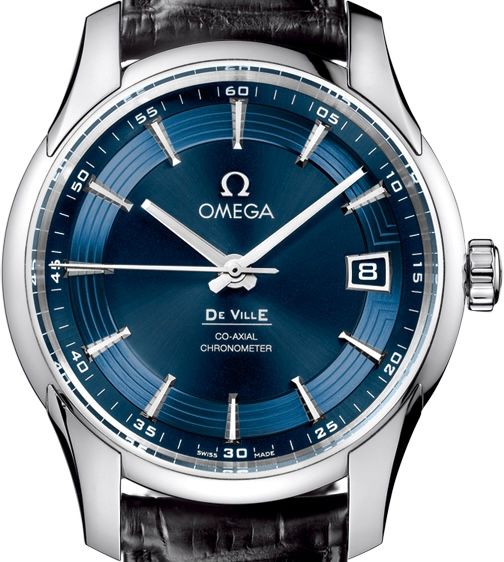
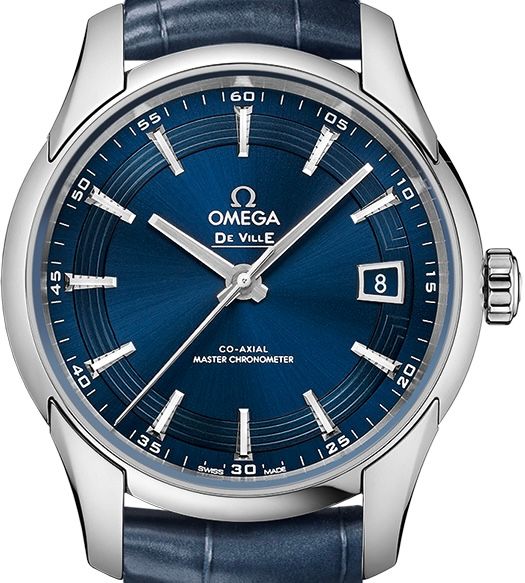
The annual calendar also exists in this transitional version with the full sapphire back and the reduced 14 mm thick case intact. The transitional annual calendar version carries the reference 433.33.41.22.03.001, and like the time-only version it retains much of the original model's look and styling but carries the updated movement with METAS certification.
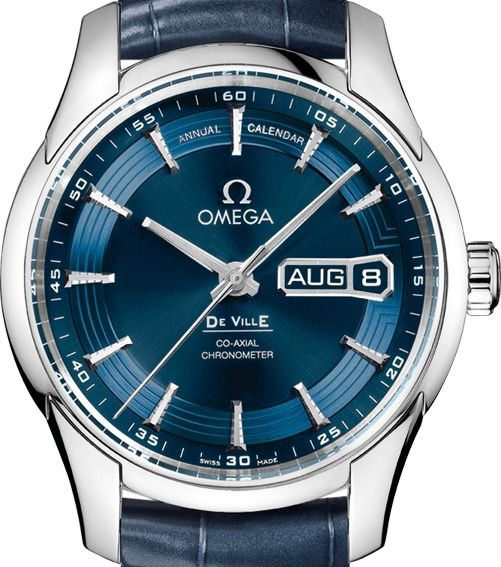
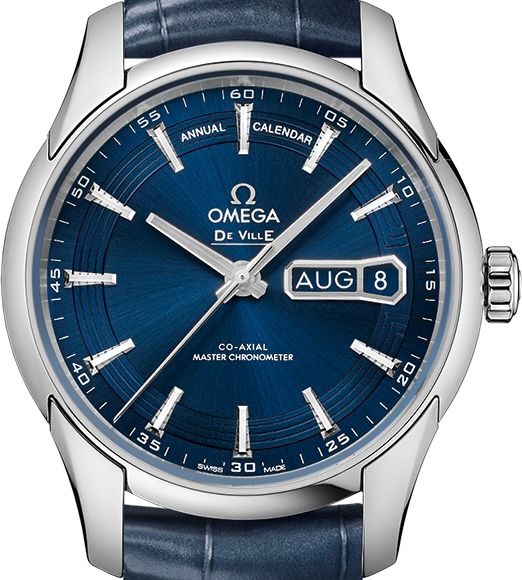
Stainless Steel
The three color options available in steel are quite attractive and suit the Hour Vision's position as a more flashy dress watch. The bronze dial in particular is a rather elegant addition, replacing the black dial of the original generation.
While simpler, the Roman numerals do very much suit the watch as do the softer, less technical looking fonts chosen this time around.
Of the stainless steel models on bracelet, the opaline silver dial is Ref 433.10.41.21.02.001, the bronze dial is Ref 433.10.41.21.10.001 and the blue dial is Ref 433.10.41.21.03.001.
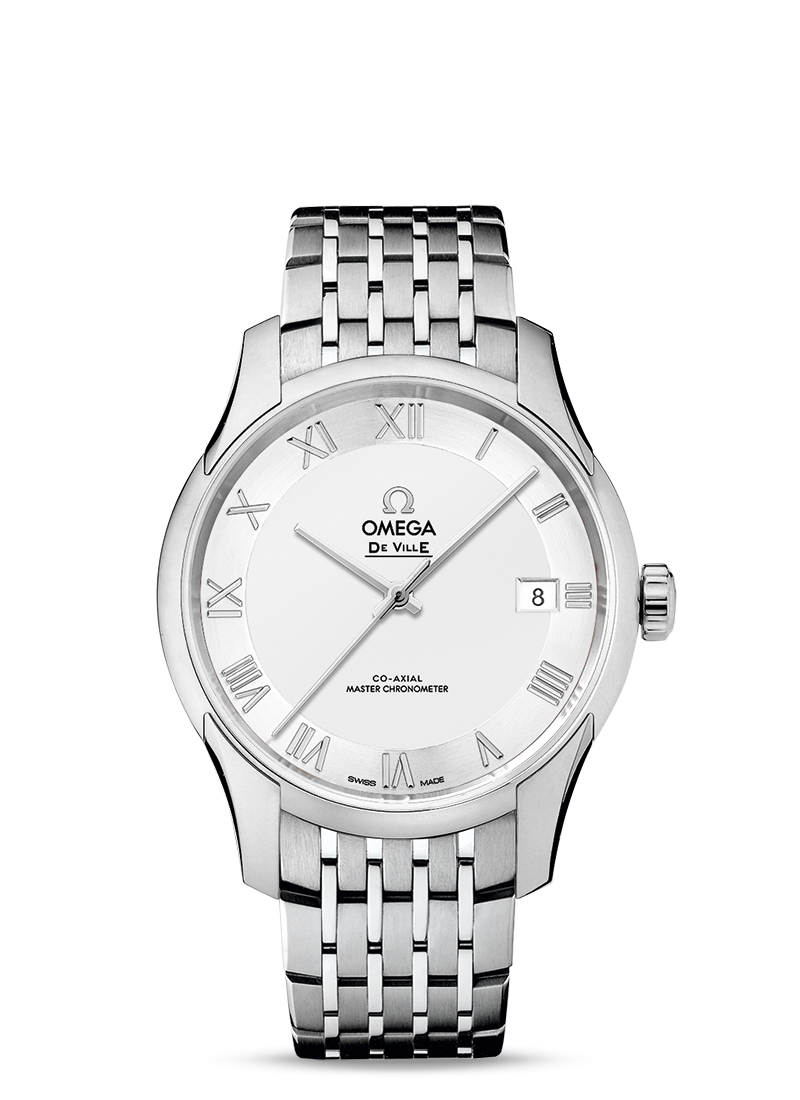
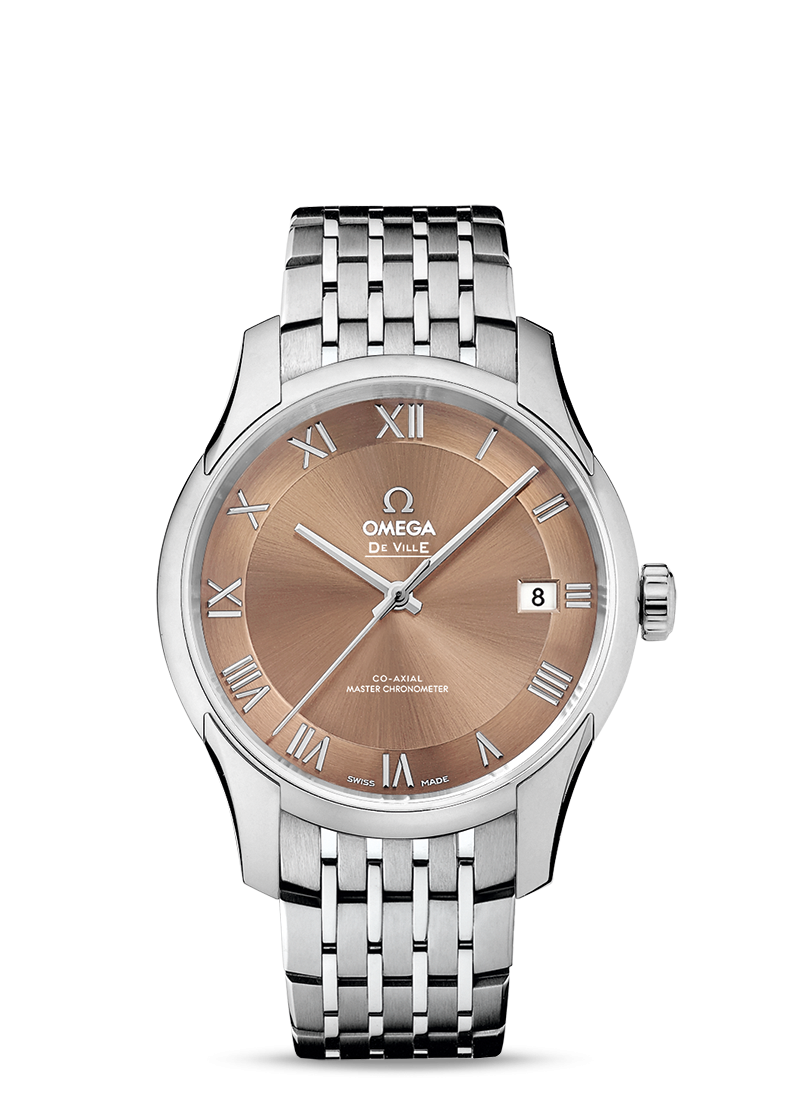
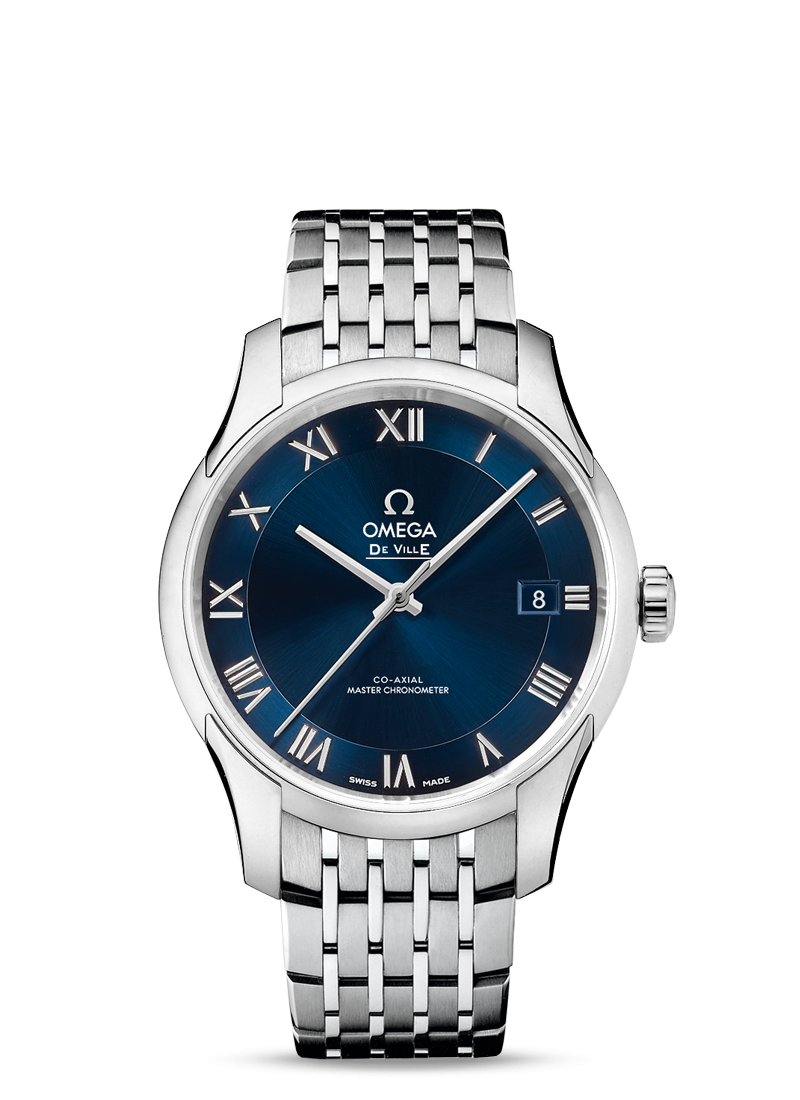
The strap versions are identical to the bracelet versions but come on leather straps with the updated Omega deployant clasp.
The opaline silver dial on black strap is Ref 433.13.41.21.02.001, the bronze dial on brown strap is Ref 433.13.41.21.10.001 and the blue dial on blue strap is Ref 433.13.41.21.03.001.
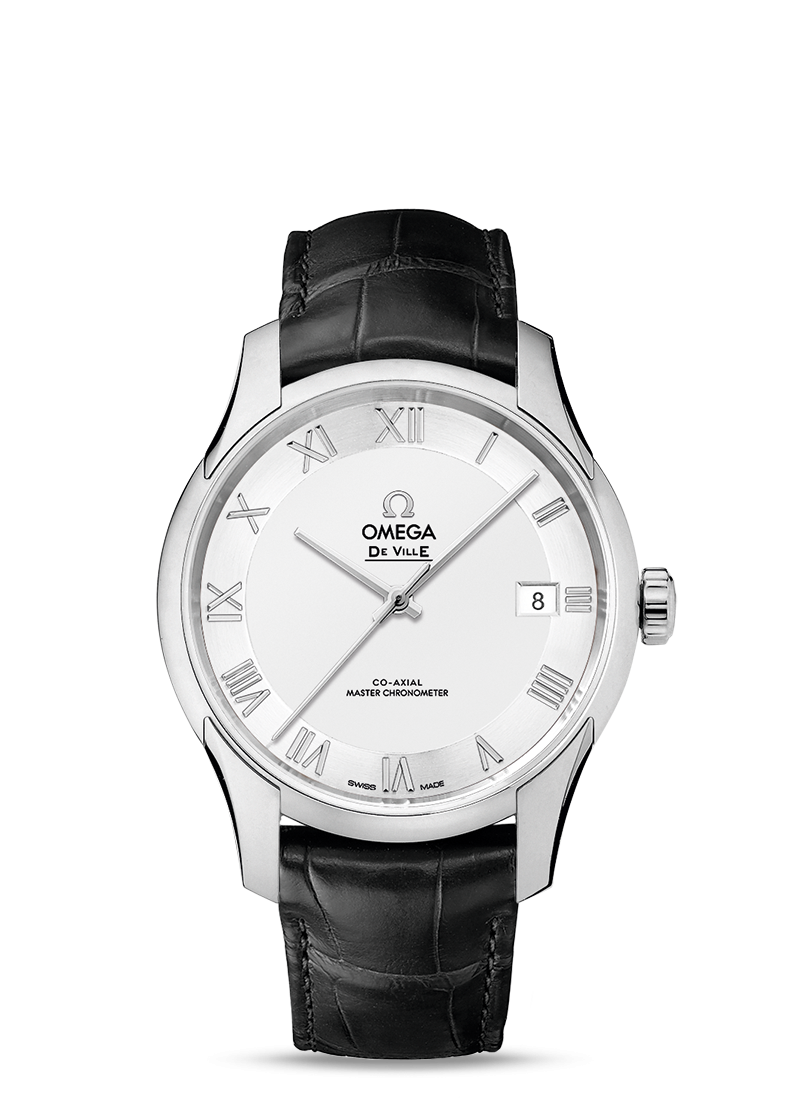
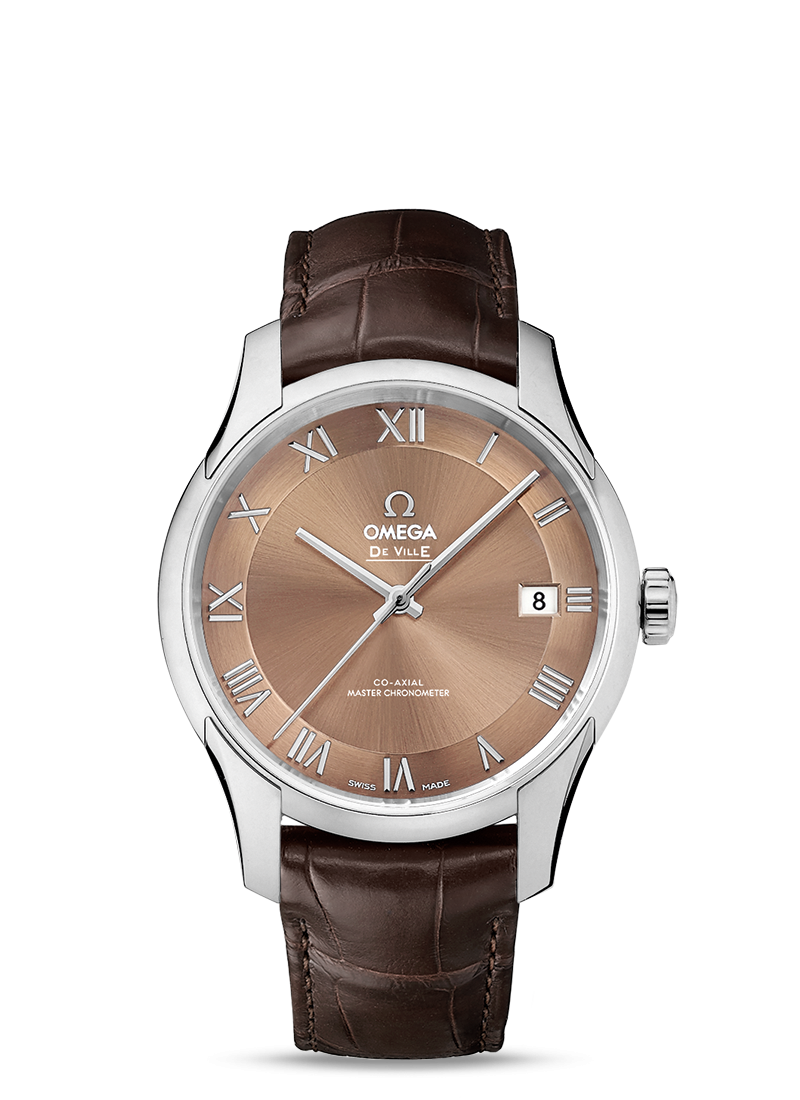
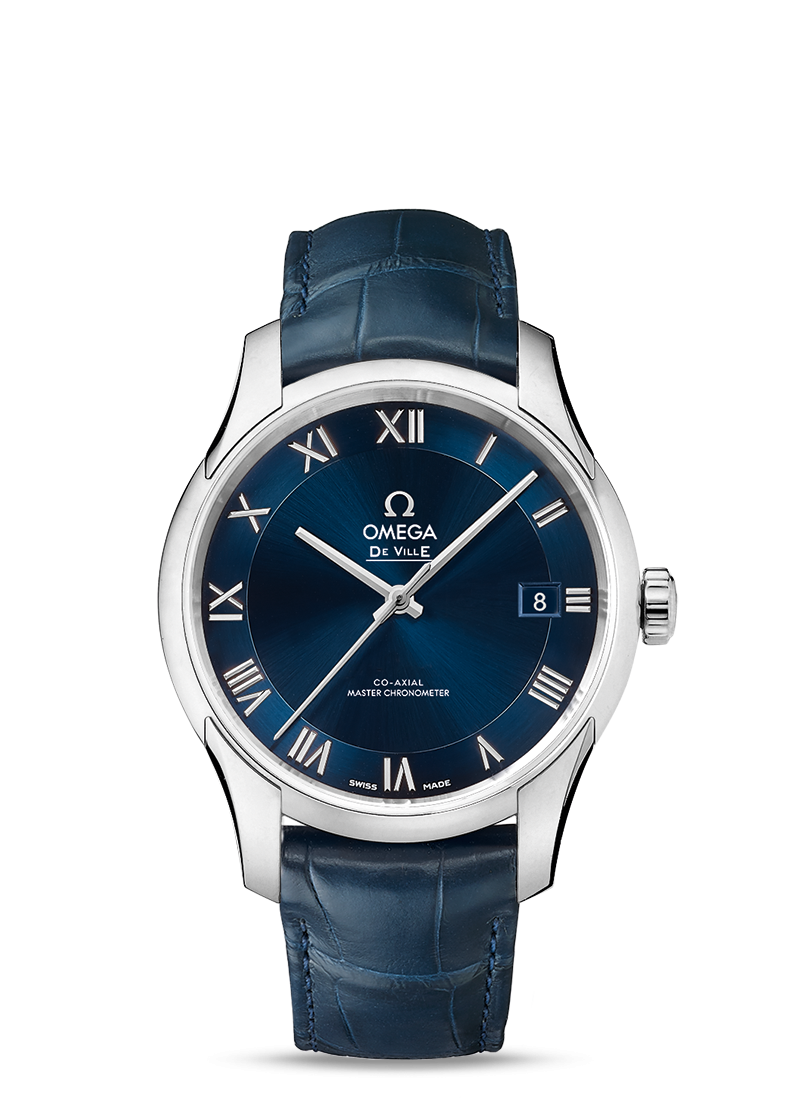
18K Red Gold
The 18K solid red gold models still look fantastic, but once again it is a bit sad to see them take a step back from the brilliance of the original especially at this very high price point. These models are powered by the Calibre 8901 decorated version of the Calibre 8900 movement.
The opaline silver dial in 18K red gold is Ref 433.50.41.21.02.001 while the chocolate brown dial is Ref 433.50.41.21.13.001.
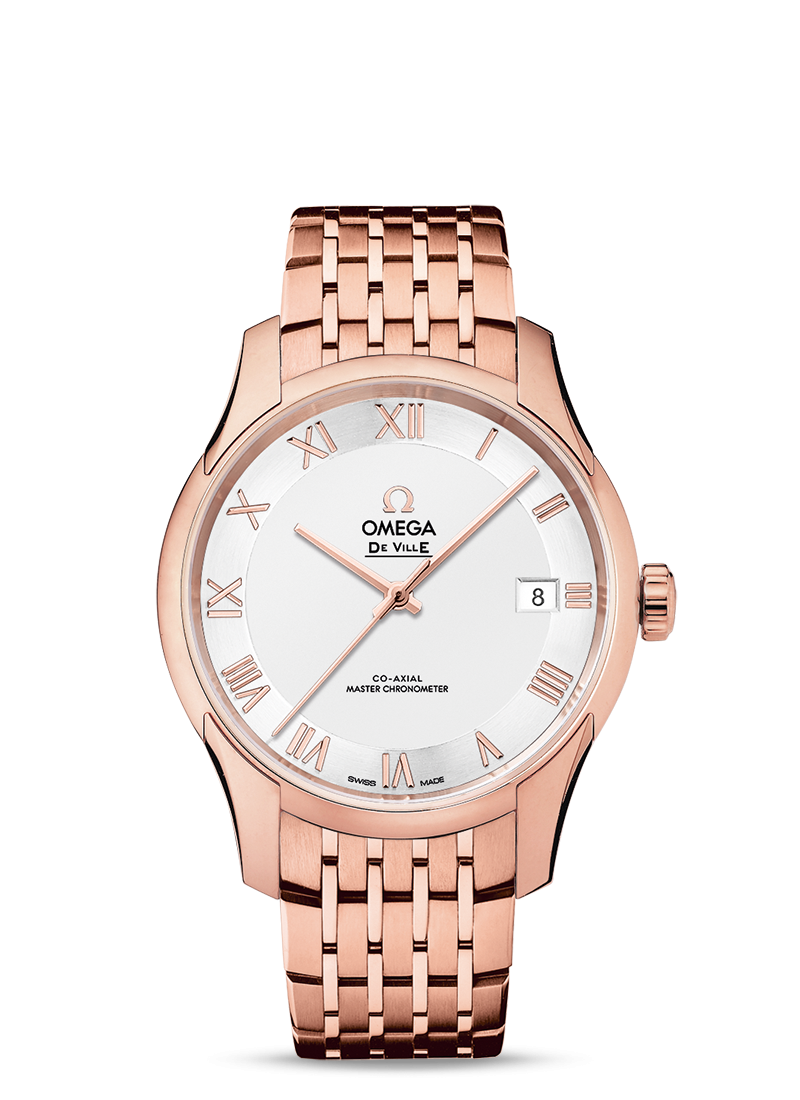
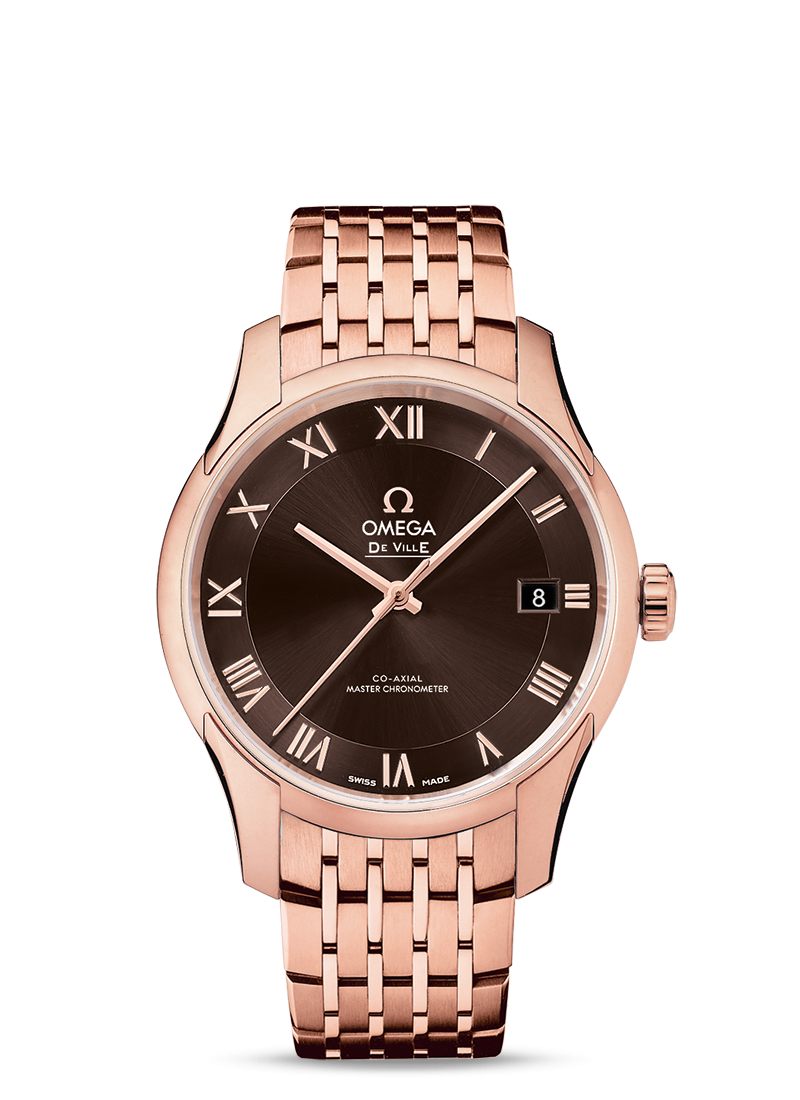
The strap versions are once again the same as the regular versions but with the updated deployant clasp on a leather strap instead of a bracelet.
The opaline silver dial is Ref 433.53.41.21.02.001 while the chocolate brown dial is Ref 433.53.41.21.13.001.
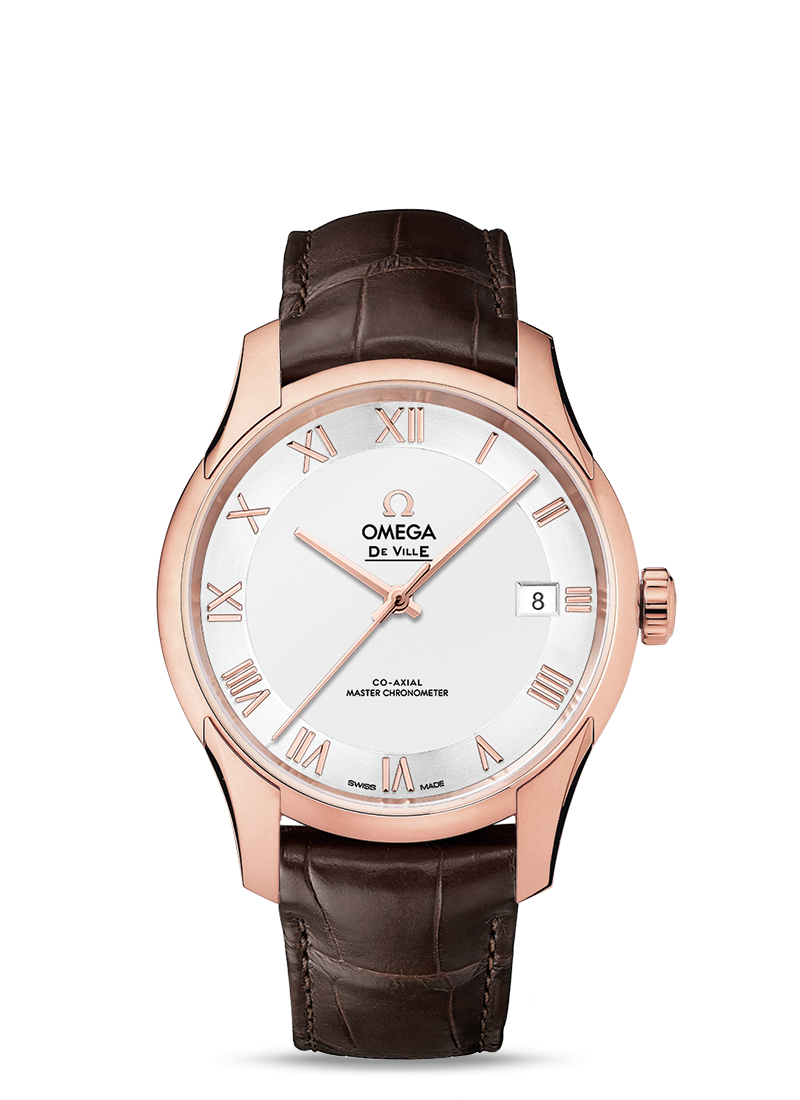
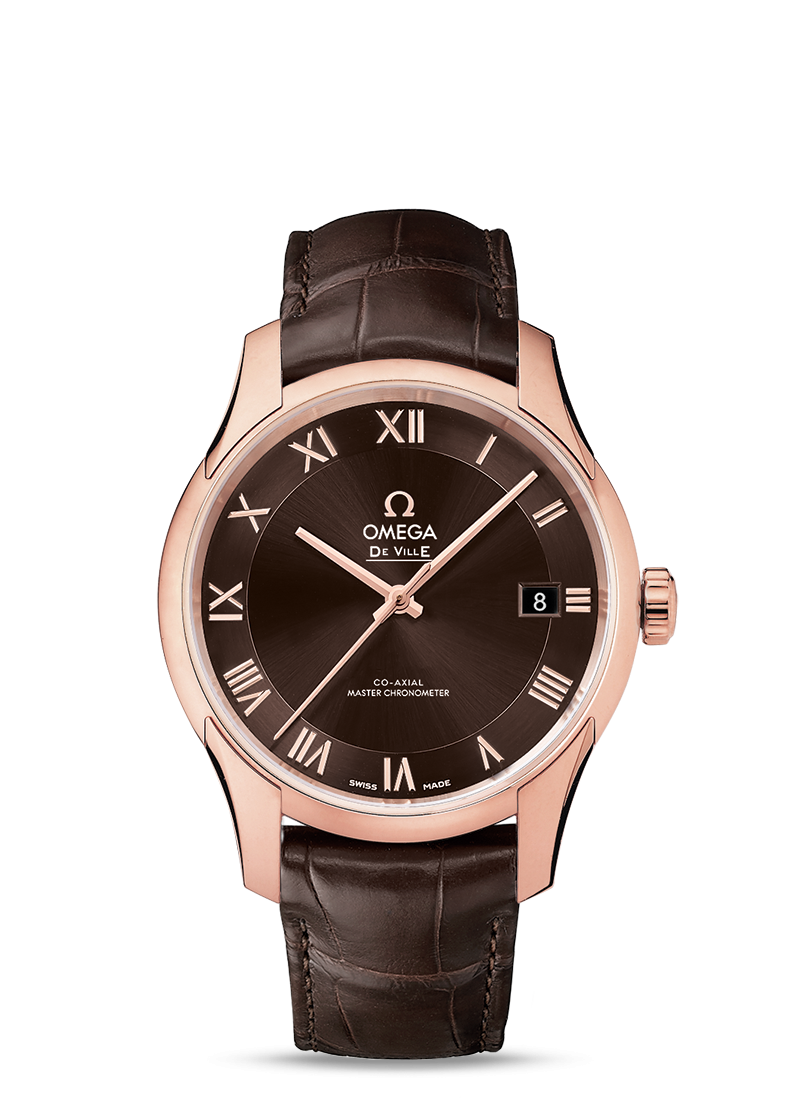
Annual Calendar
The annual calendar variants powered by Calibre 8902 for steel and 8903 for gold variants carry a thicker 14.2 mm case to house their complex movement. The dials in use are near identical to the time-only variants and omit the "annual calendar" text at the top of the dial which was un-popular among some enthusiasts on the first generation.
For the steel annual calendar models on bracelet, the opaline silver dial is 433.10.41.22.02.001, the bronze dial is Ref 433.10.41.22.10.001 and the blue dial is Ref 433.10.41.22.03.001.
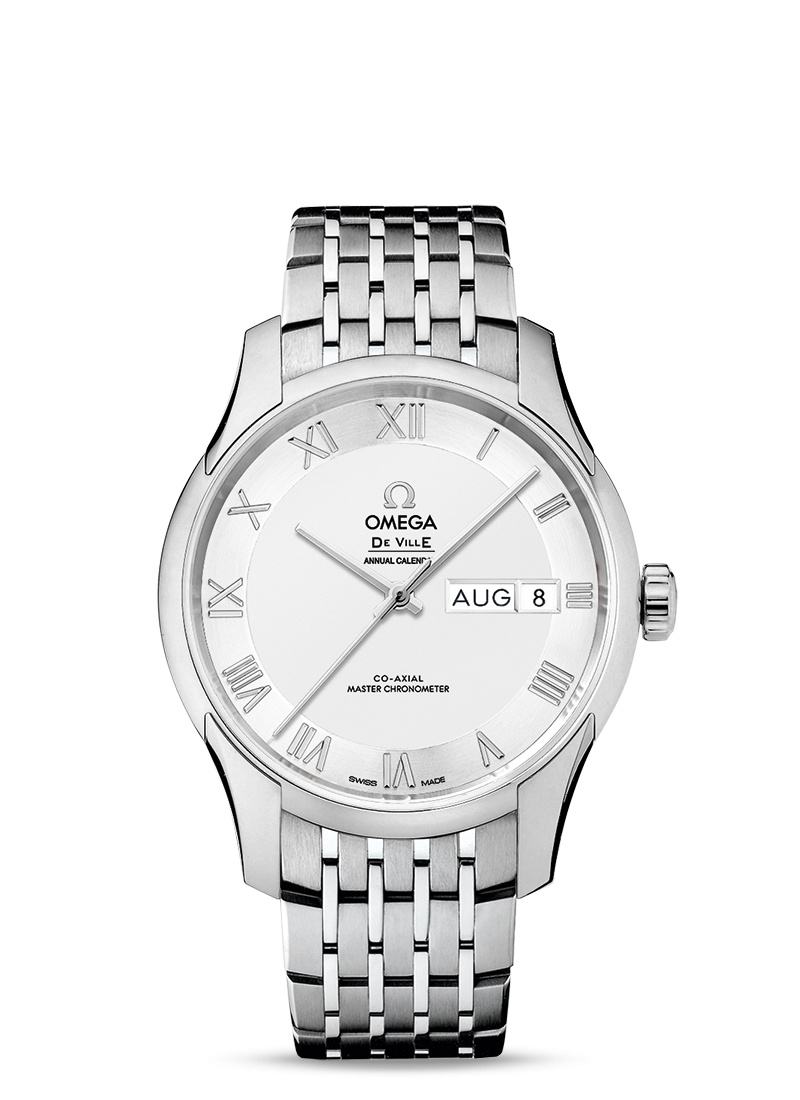
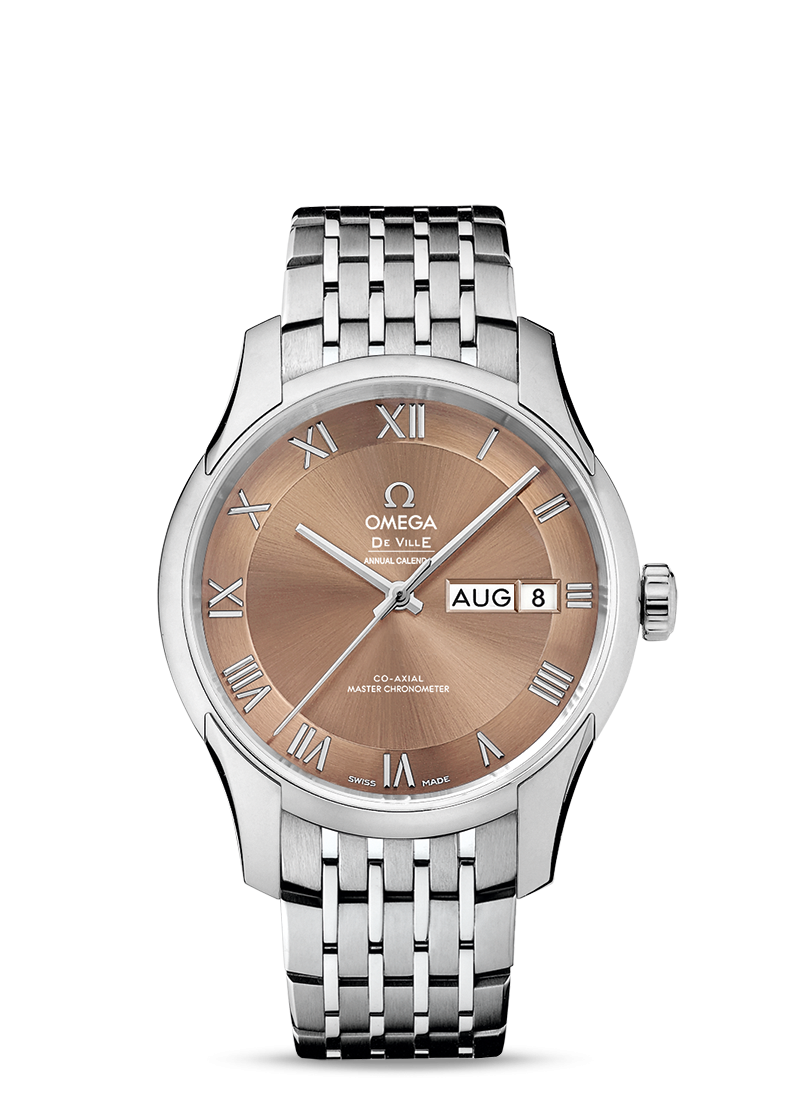
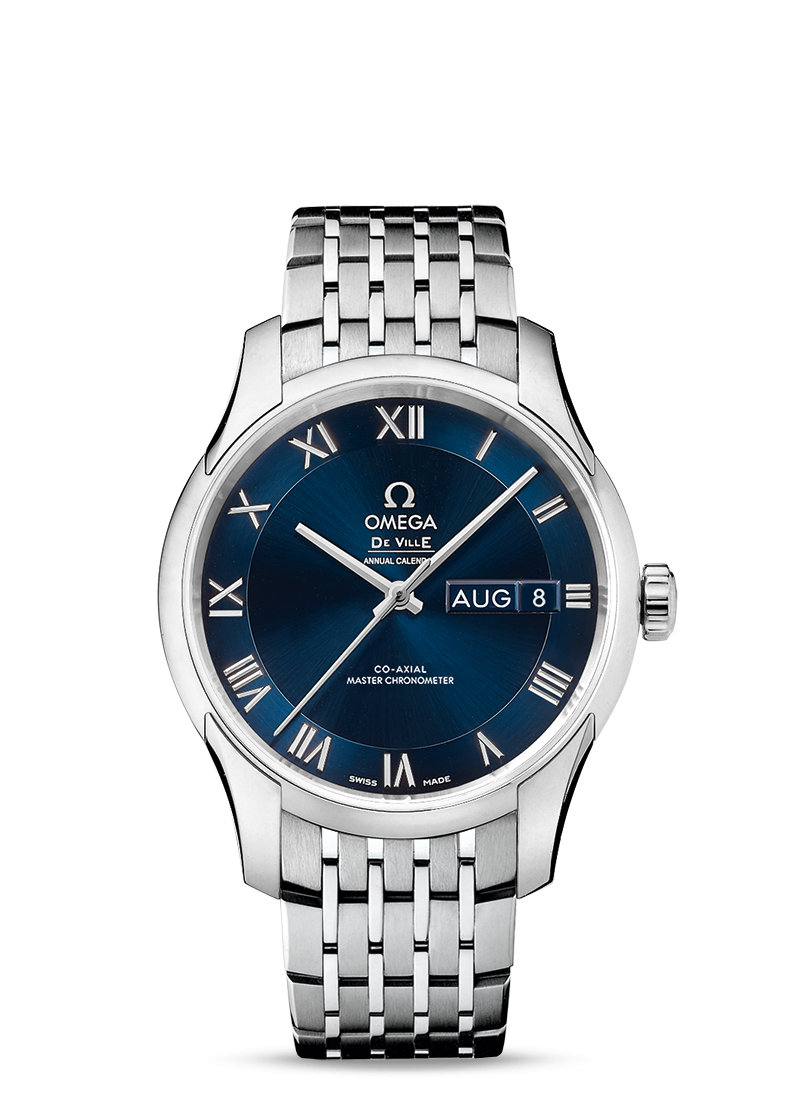
The strap versions of the annual calendar follow much the same pattern as the regular version with the same dials available and matching straps.
Of the steel annual calendar models on strap, the opaline silver dial is 433.13.41.22.02.001, the bronze dial is Ref 433.13.41.22.10.001 and the blue dial is Ref 433.13.41.22.03.001.
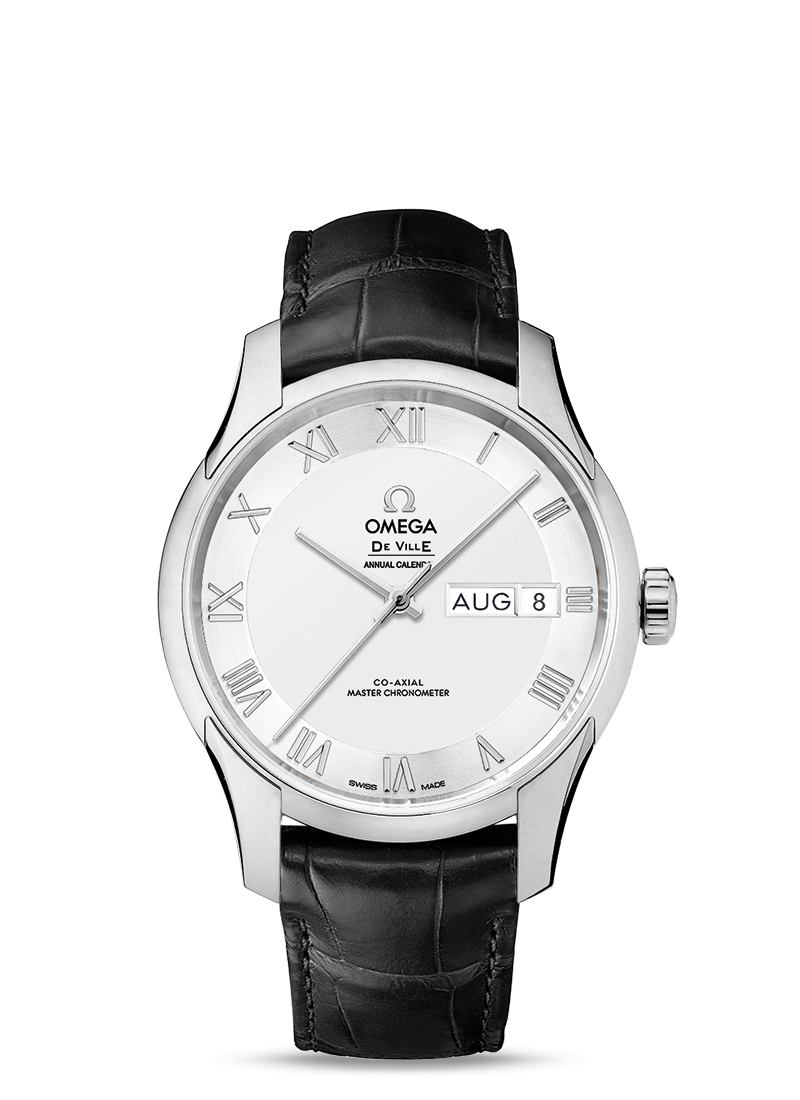
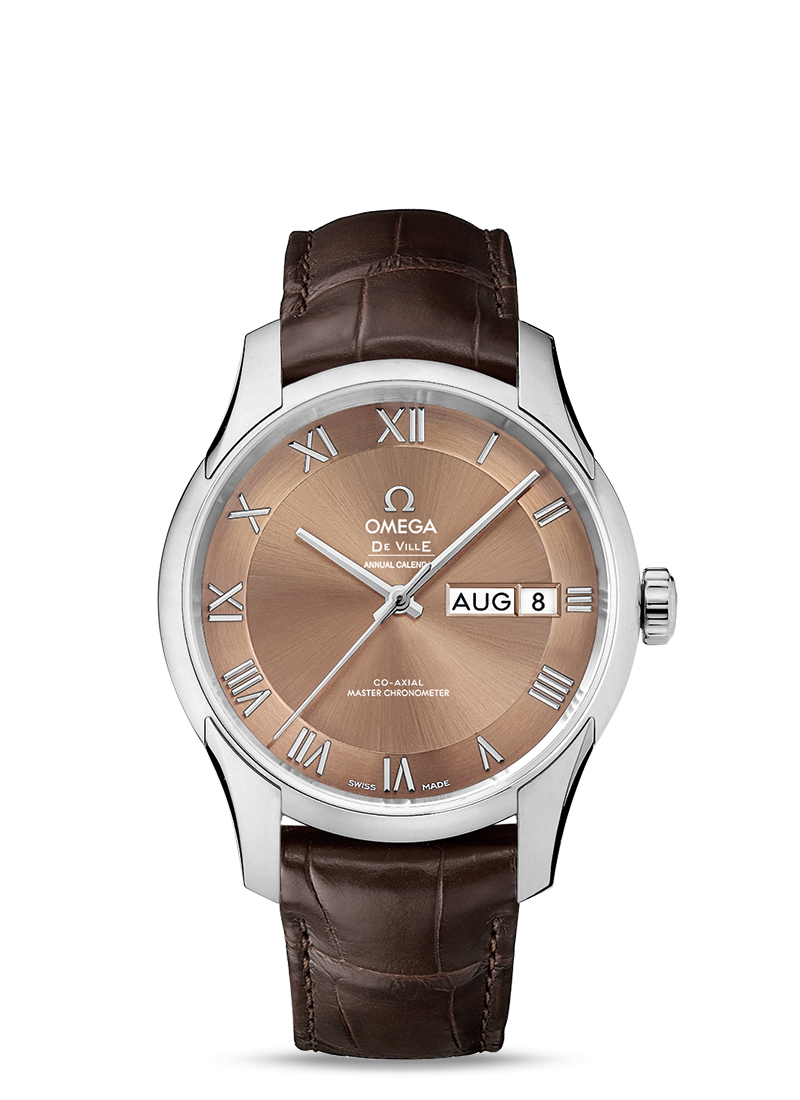
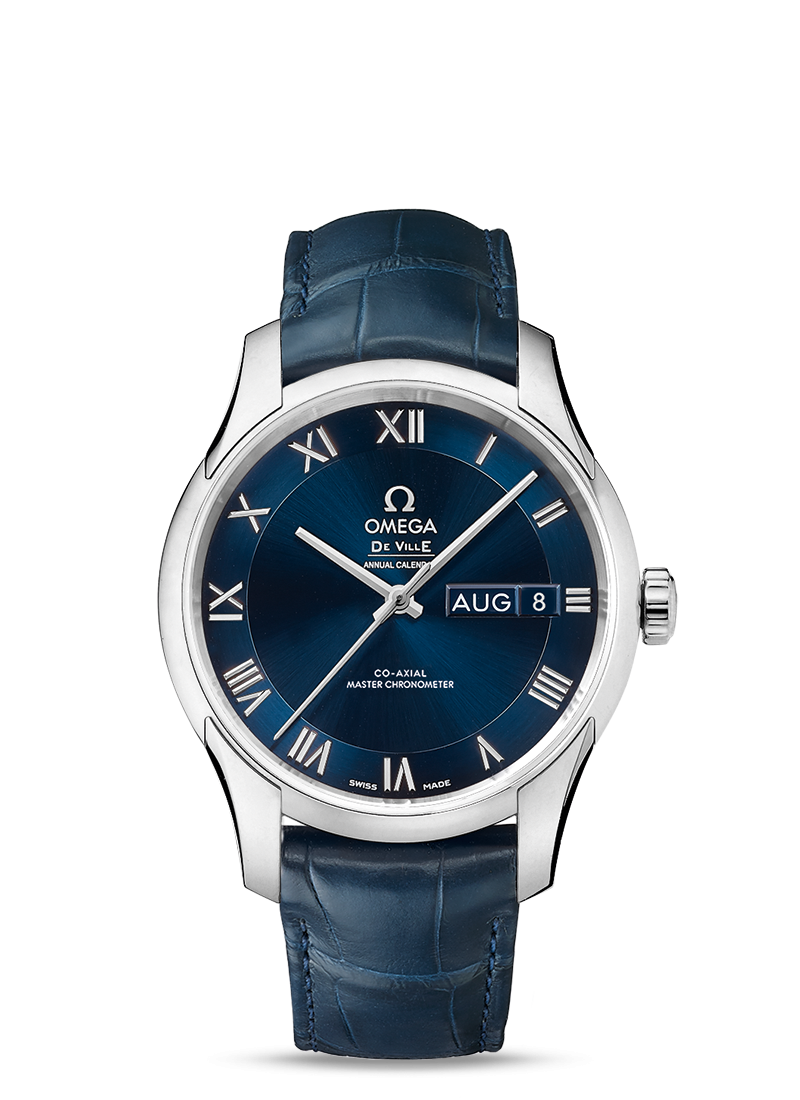
Only two 18K annual calendar models are available, both in blue dial which makes for an interesting contrast to the time only gold models in opaline silver and brown dial.
Of the 18K red gold annual calendar watches, the blue dial on bracelet is Ref 433.50.41.22.03.001 while the blue dial on blue leather strap and deployant clasp is Ref 433.53.41.22.03.001.
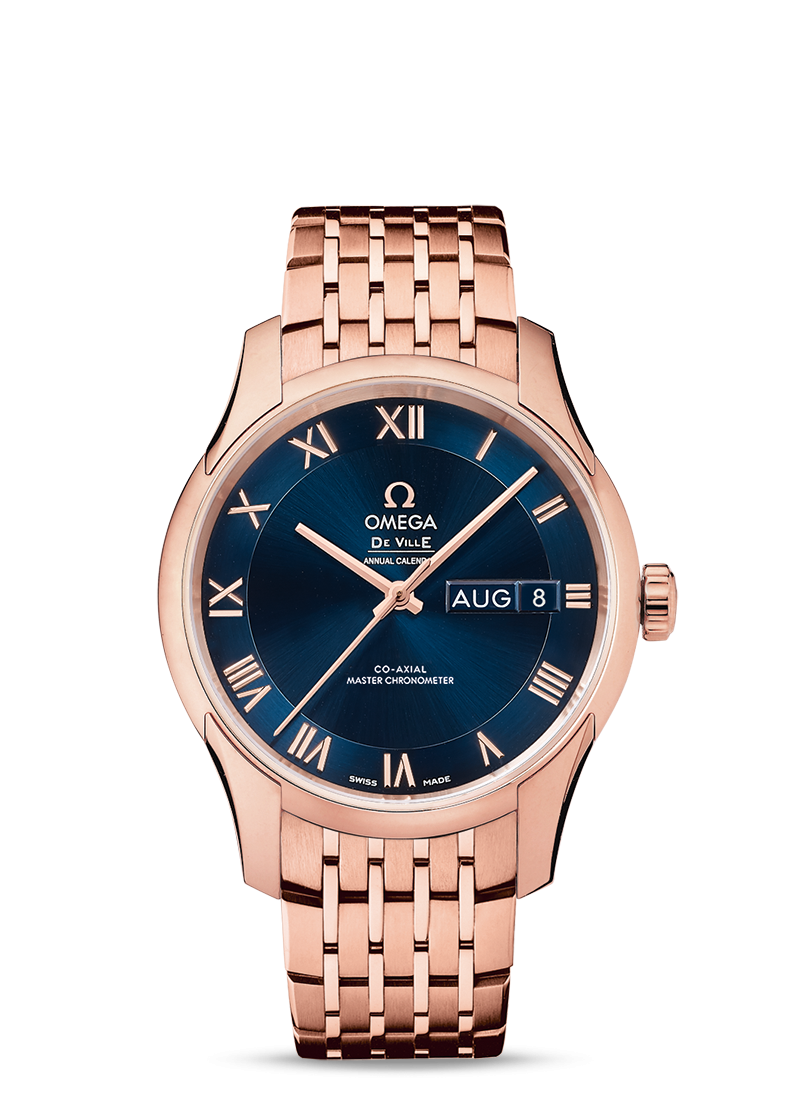
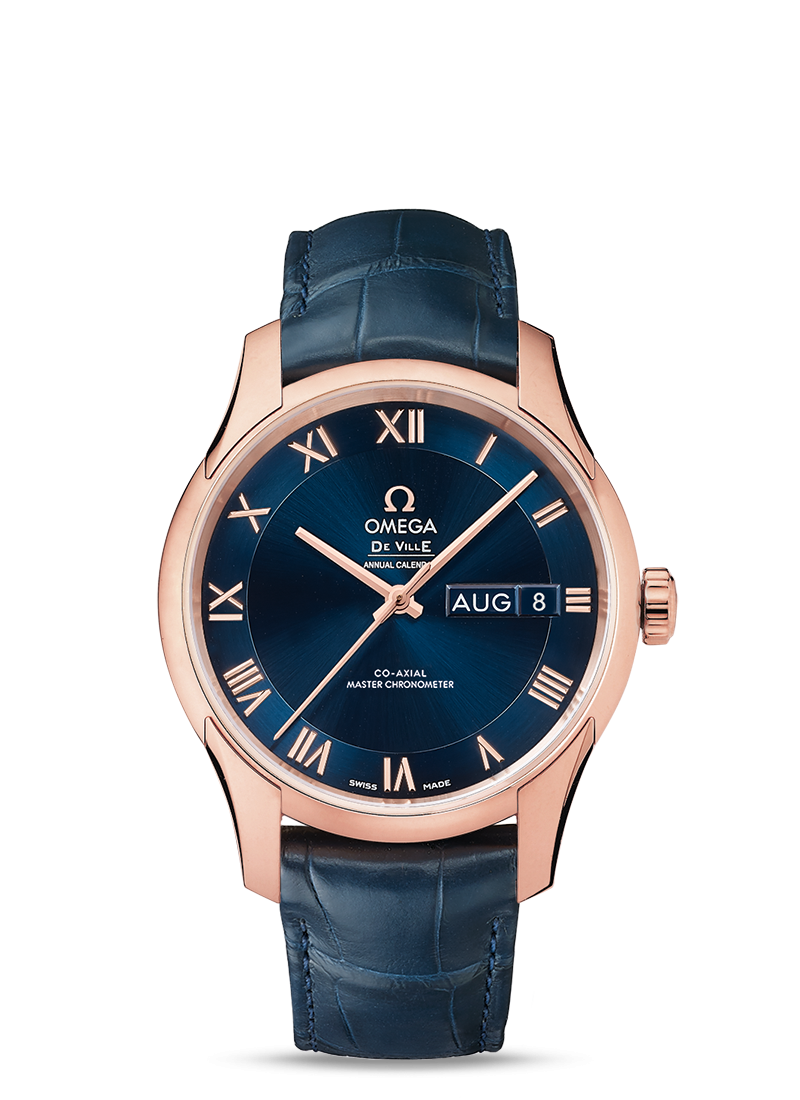
Buying
Normally this is the part where I would go about identifying the more desirable versions within the model range, giving an idea of what to check when buying, where to look and so on.
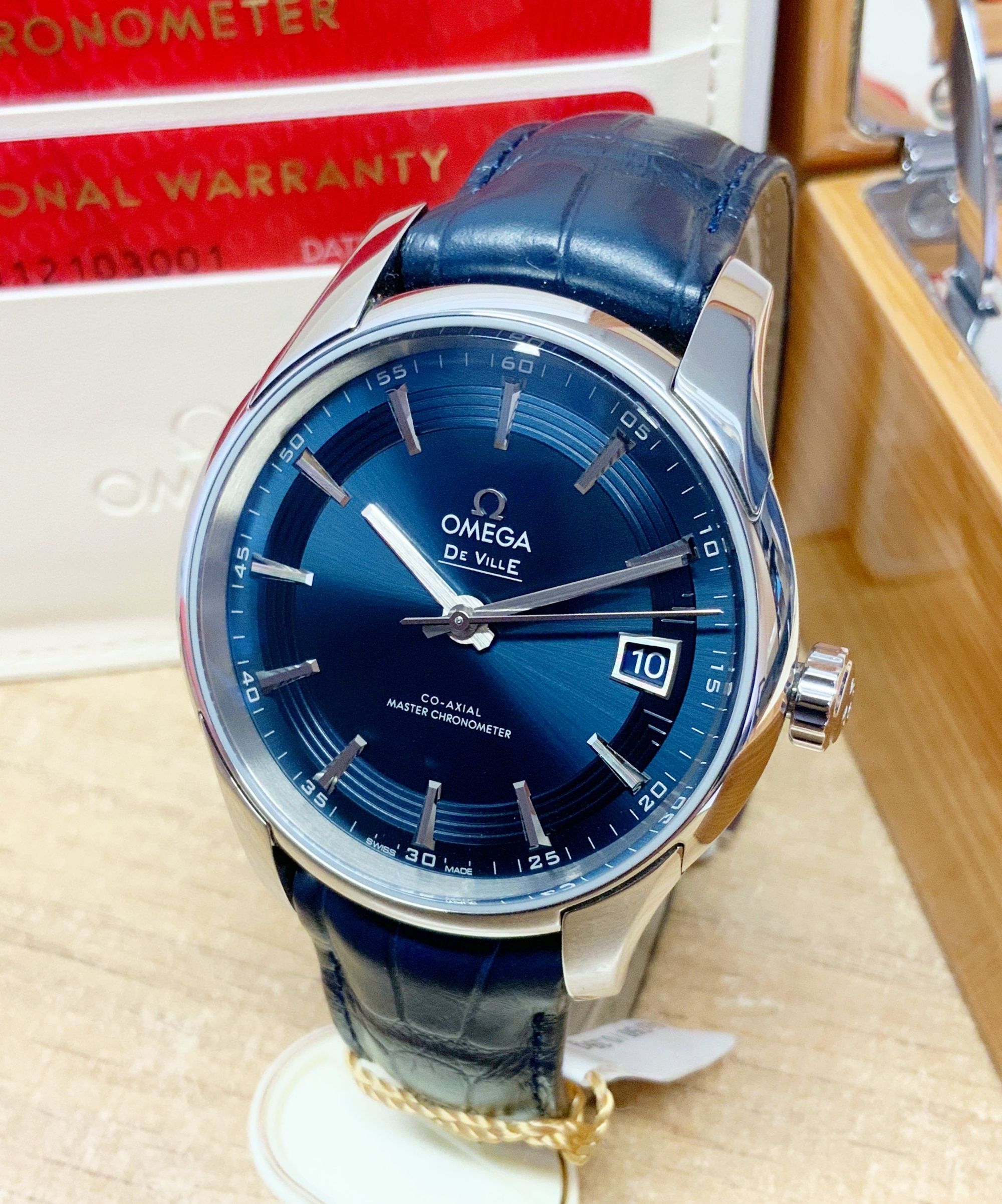
The best of the second-generation models are the transitional blue dial models, the time only Ref 433.33.41.21.03.001 and the annual calendar Ref 433.33.41.22.03.001. These two watches are both only available on a strap but are the best Hour Visions ever made combining the anti-magnetic and METAS certified Calibre 8900 with the thinner panoramic sapphire case of the original. If you can find either of these at a reasonable price they're well worth purchasing as they are the pick of the Hour Vision line.
As for the rest of the second-generation Hour Vision models, they're good watches but second hand prices are significantly higher than first generation models, in some cases almost as high as 18K gold first generation models. While Calibre 8900 is a great movement and a step forward from the Calibre 8500, the original is no slouch either and performs brilliantly with proper maintenance.
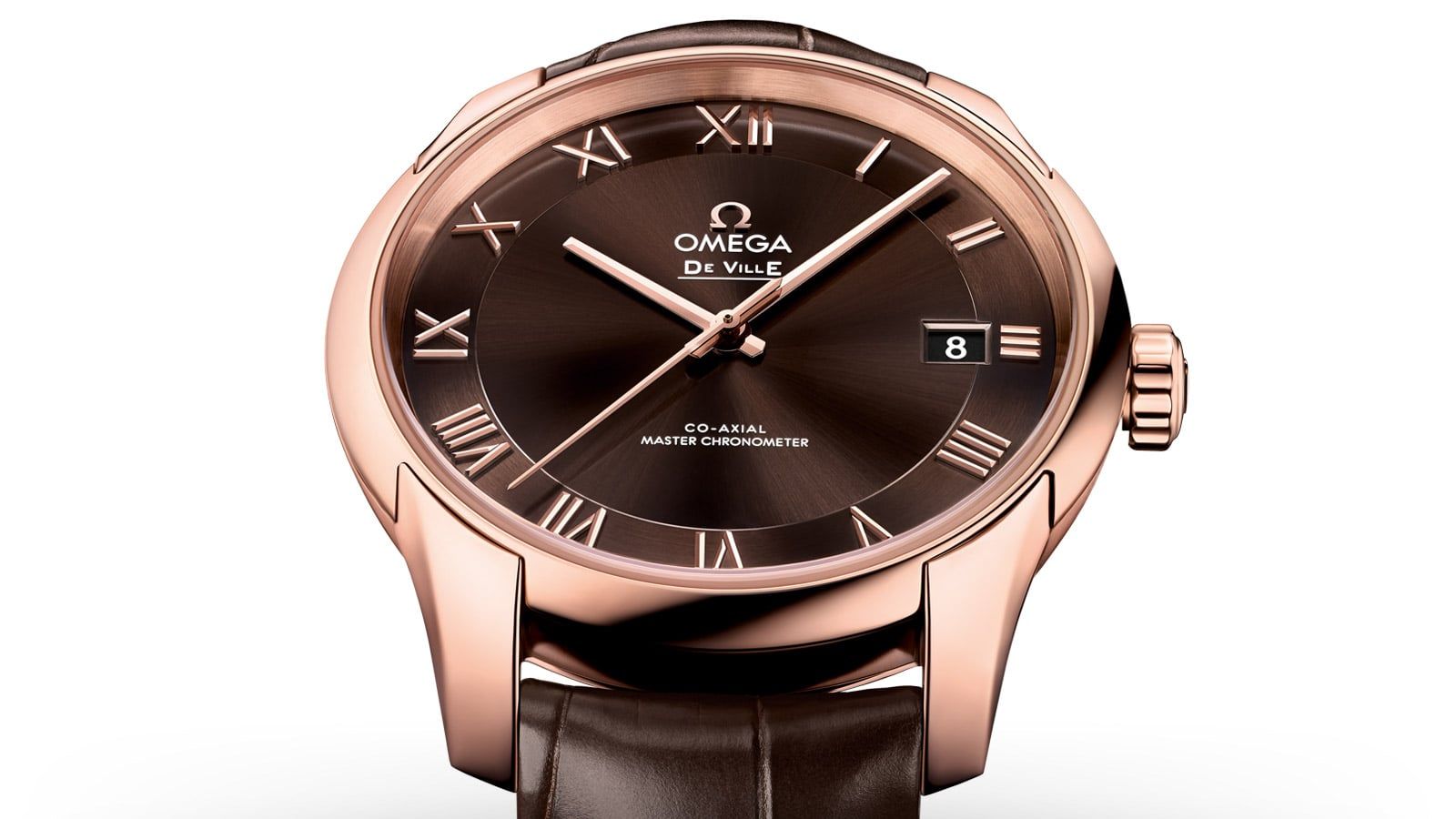
As a result, I can't really recommend buying these second-generation Hour Vision models over the first generation on the used market until the prices soften further as right now you're paying more money for less watch. Unless you really love the bronze dial or the applied roman numerals, save your money, read the article below and buy a first generation instead as it is one of the most special modern Omega watches ever made.

This shouldn't be taken as a slight to anyone who does have a second-generation, it is a great watch, it just unfortunately lives in the shadow of one of the most significant watches Omega has ever produced.
If you are buying an updated Hour Vision, the priority is the case and bracelet condition. There is more metal to scratch on these watches so ensure no edges have been lost to polishing and that there are no major dings or dents. It is always best to get the bracelet version if given the choice as you can sell it if you don't want it and it is a costly thing to add after the fact while straps and deployants are much cheaper.
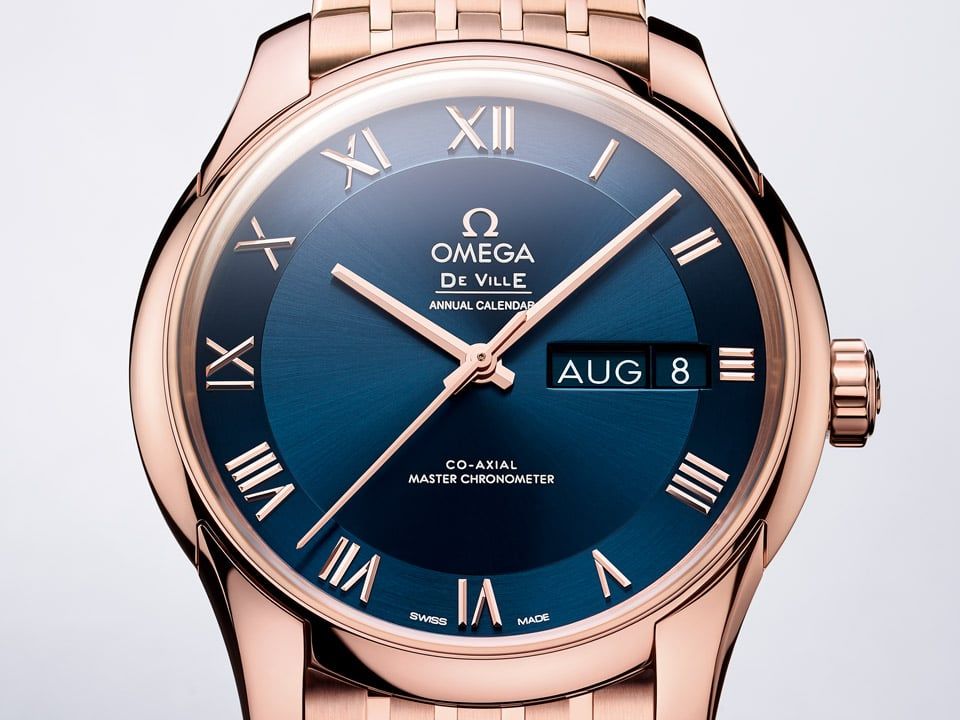
These watches didn't tend to sell as well as their predecessors so you will find them outnumbered by first generation models across sites like eBay and Chrono24 but with patience you can find what you're after. The bronze dial in particular was a strong seller and tends to be the most popular. On the other hand, the annual calendar models were very expensive new and combined with the poorly understood complexity of the movement they did not sell very well at all.
Most of these watches are fairly new and not yet due for service which is one added benefit of the newer generation as they began production in 2016.
While not bad, they are one step forward and two steps back, which is a real rarity in Omega's modern era. Unless you're really set on them, consider the first generation or hunt one of the very special blue transitional models.
Discussion thread on Omegaforums can be found here:
